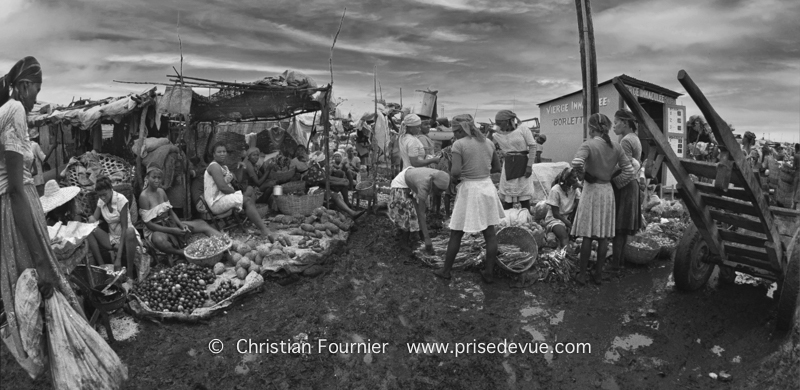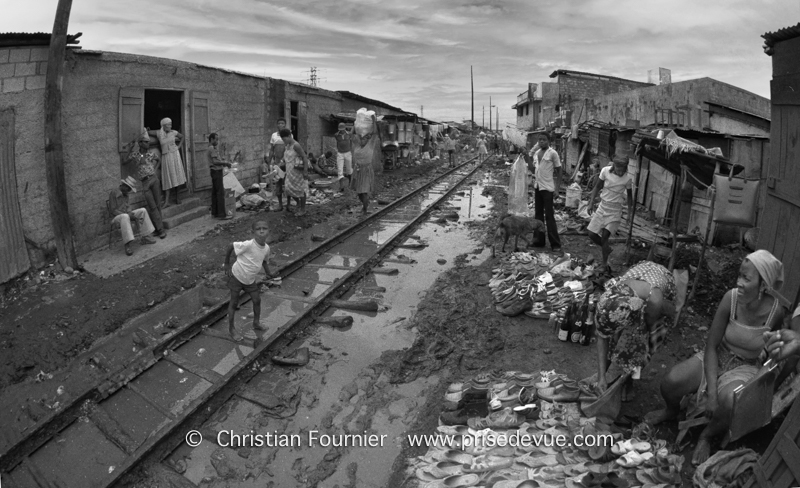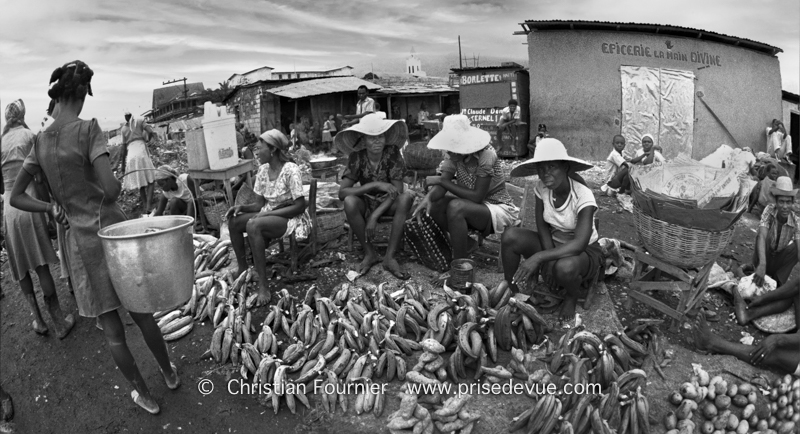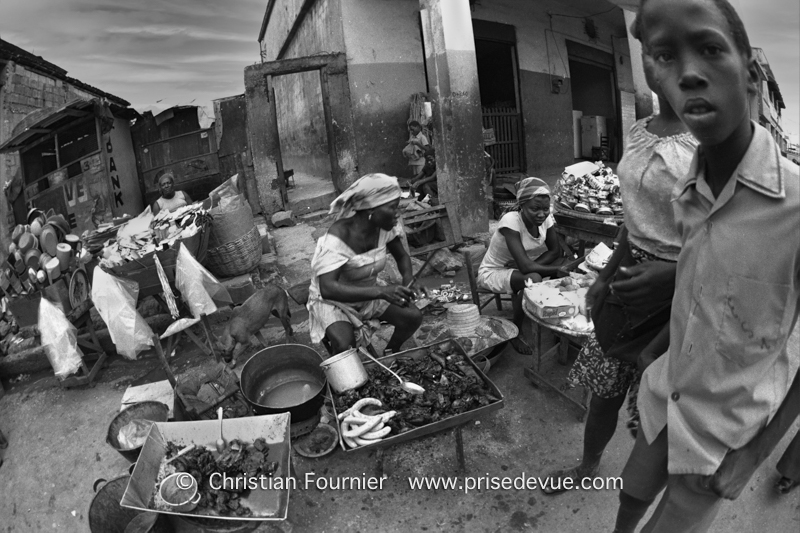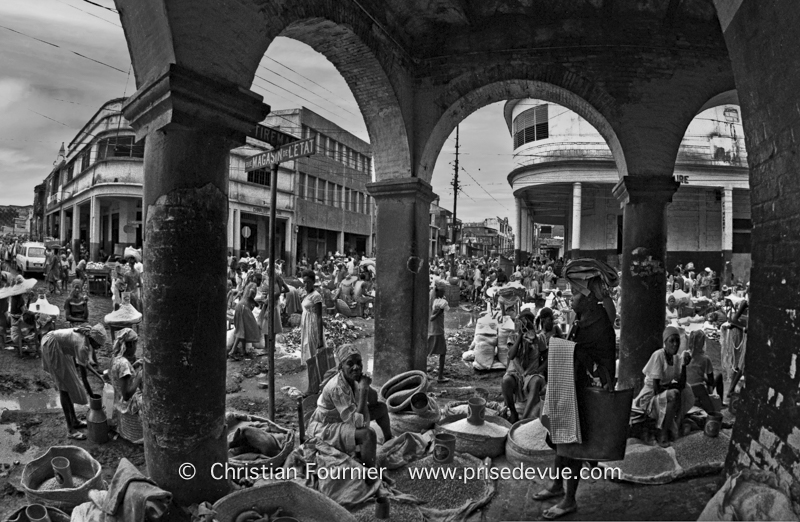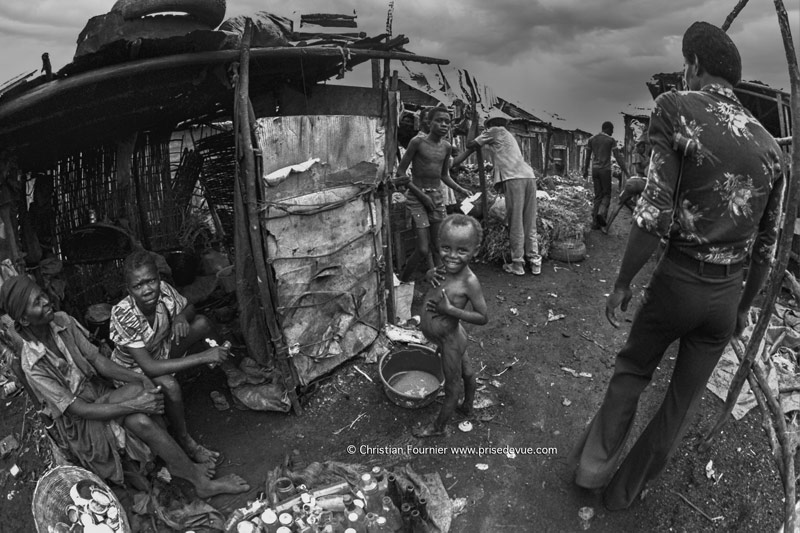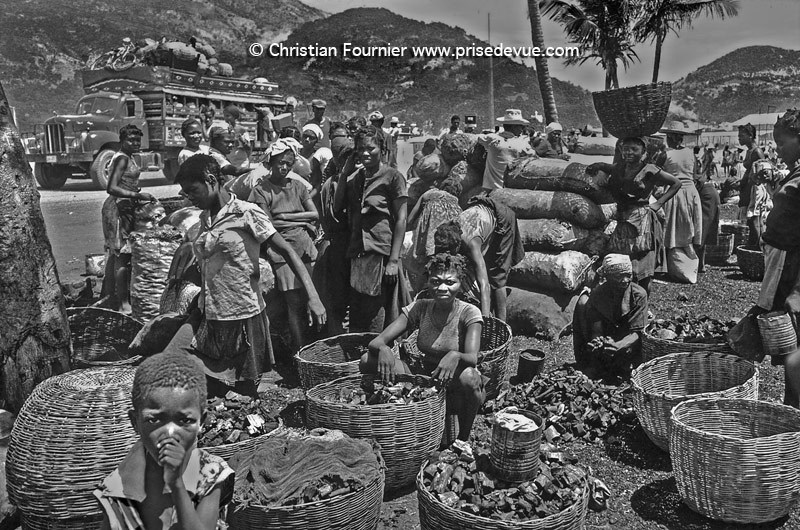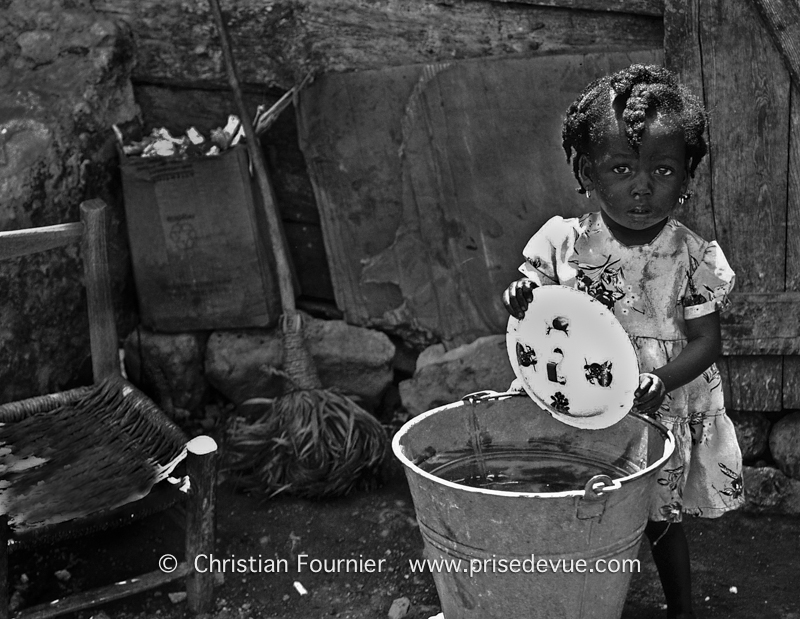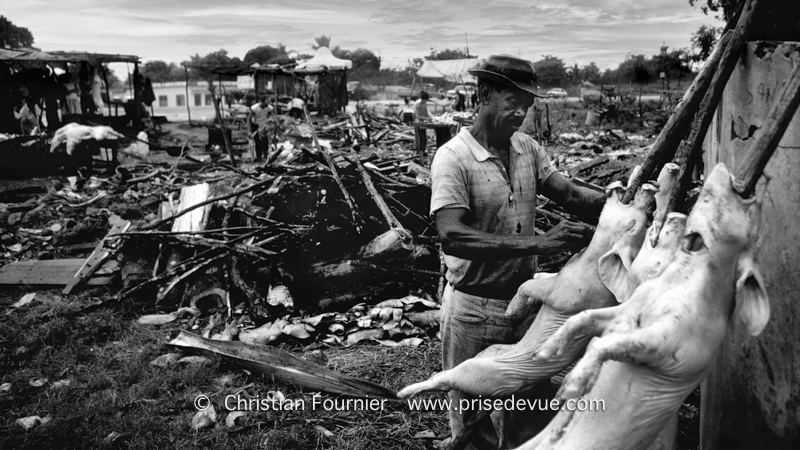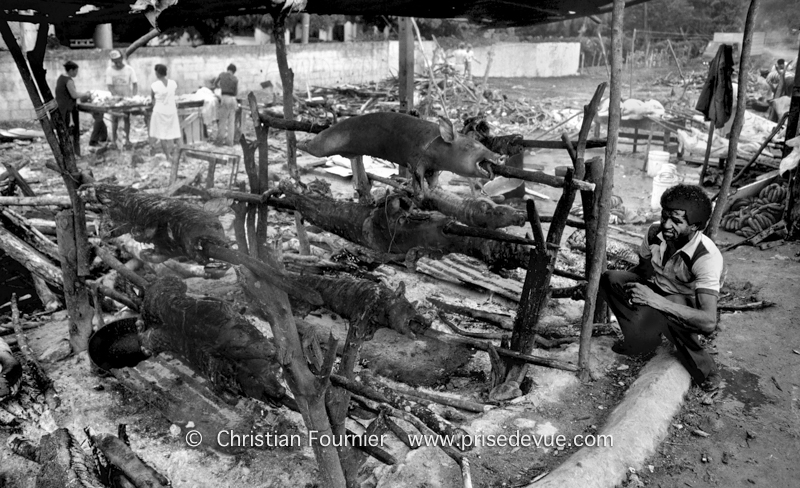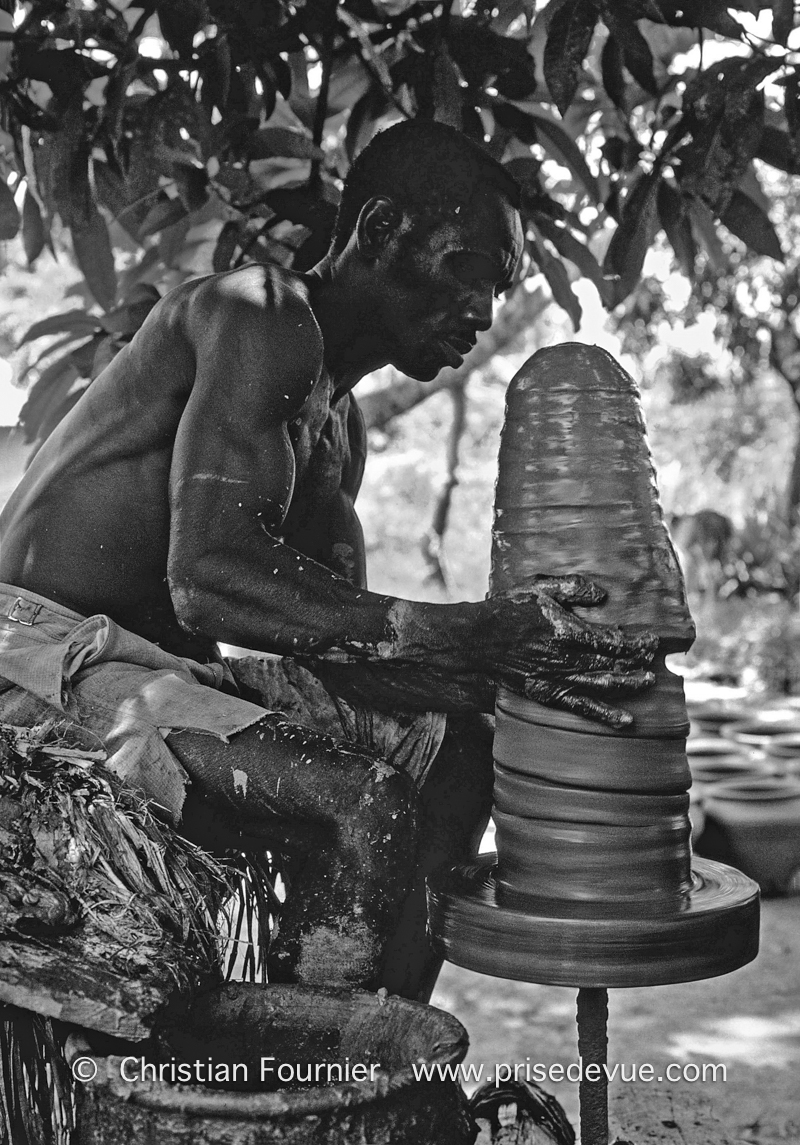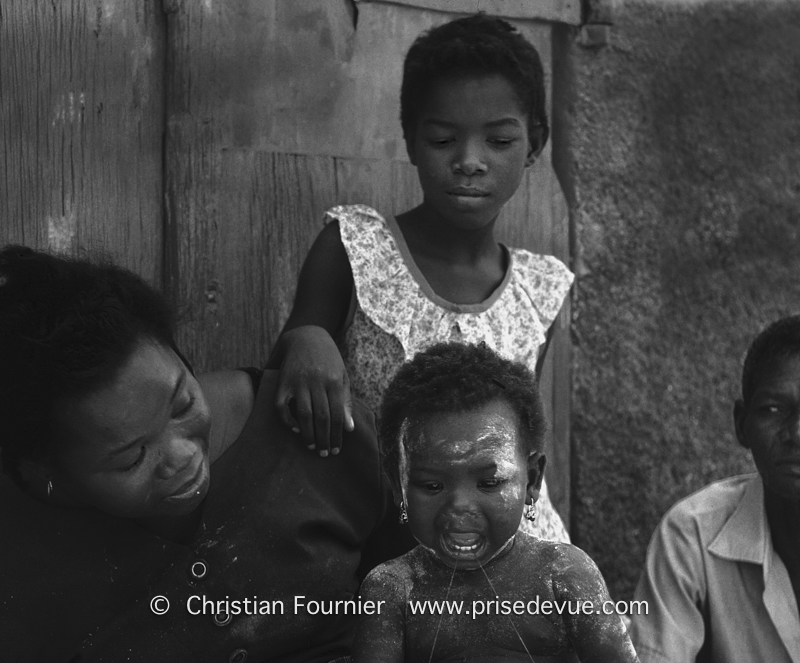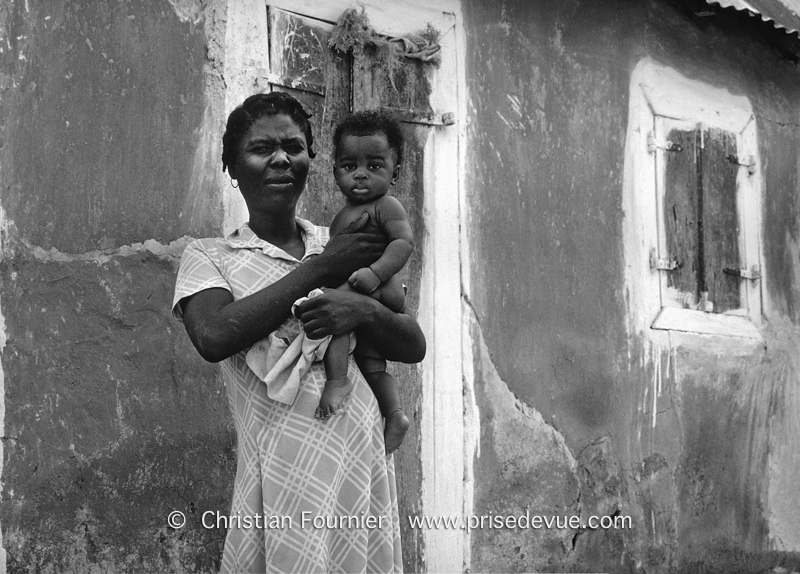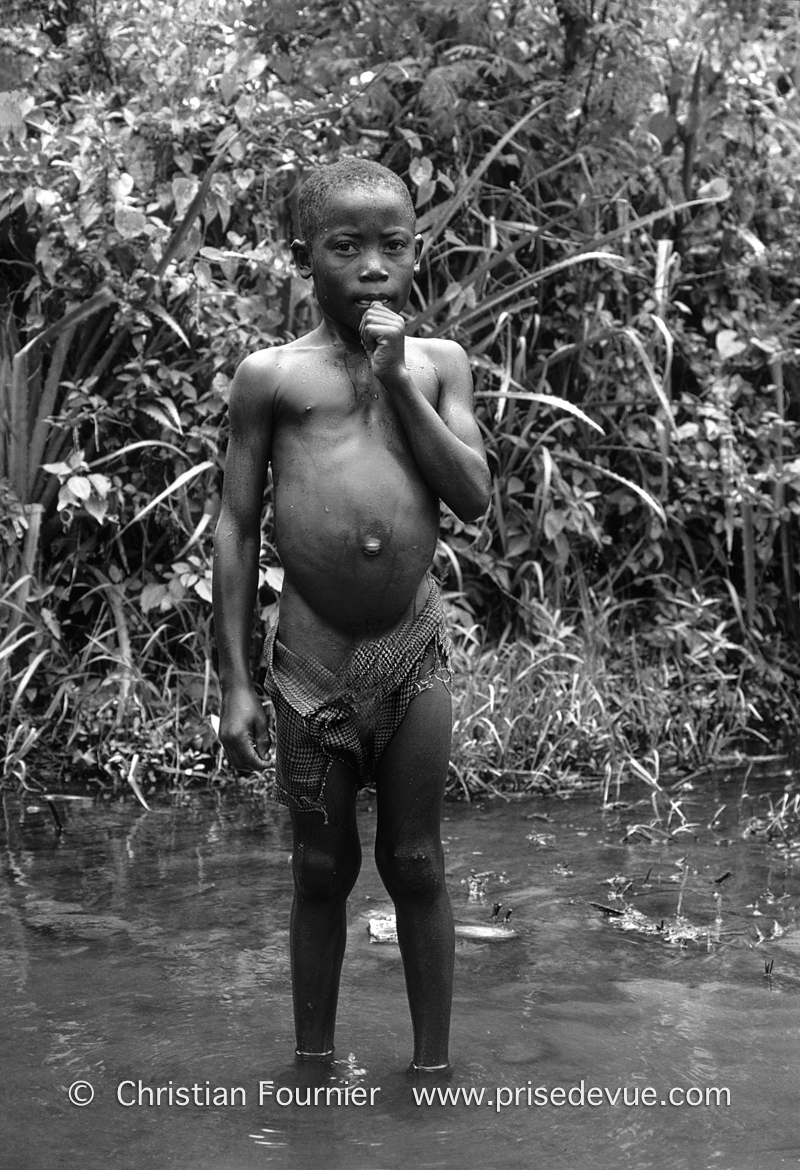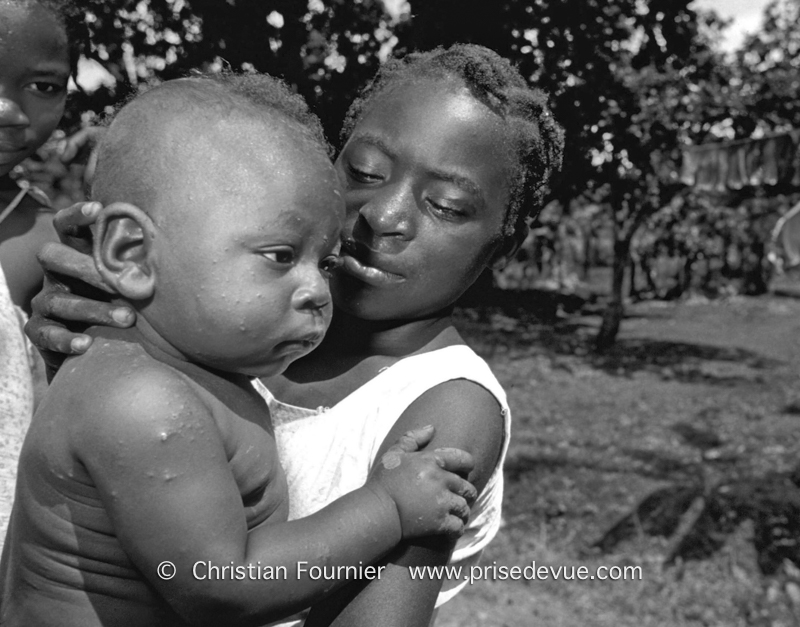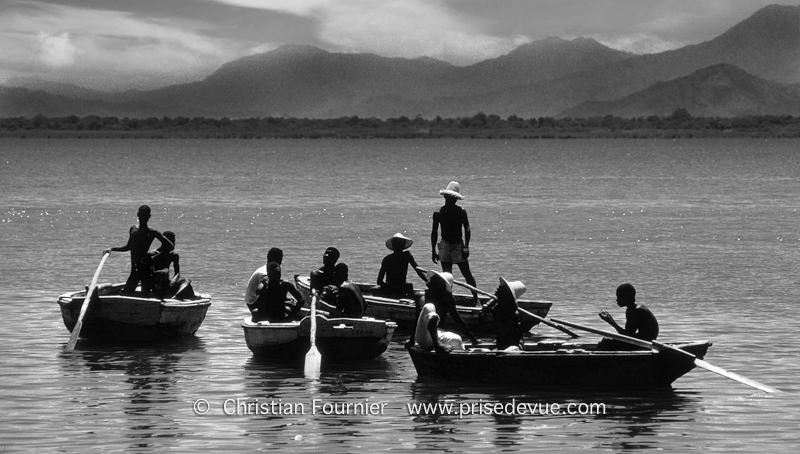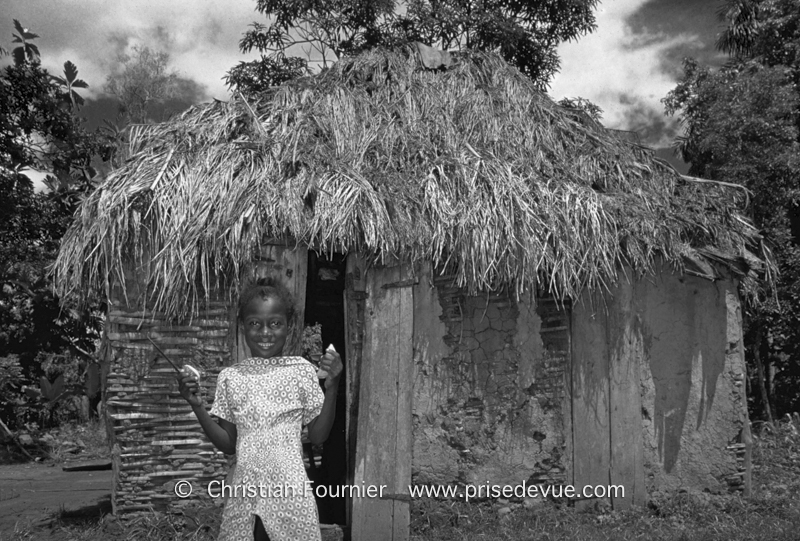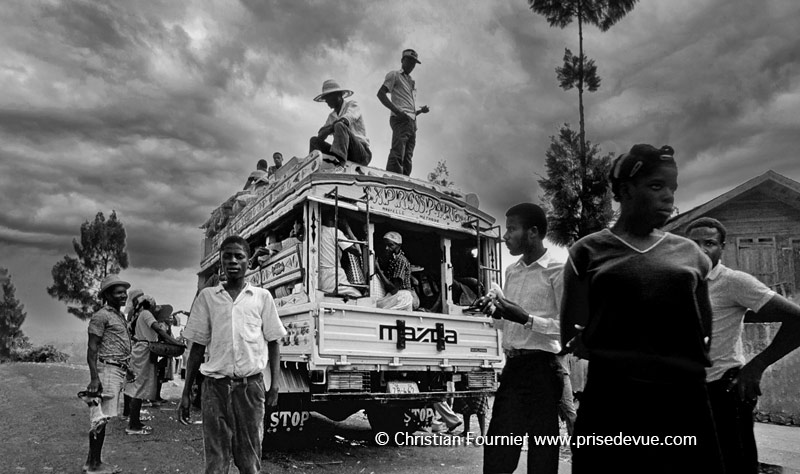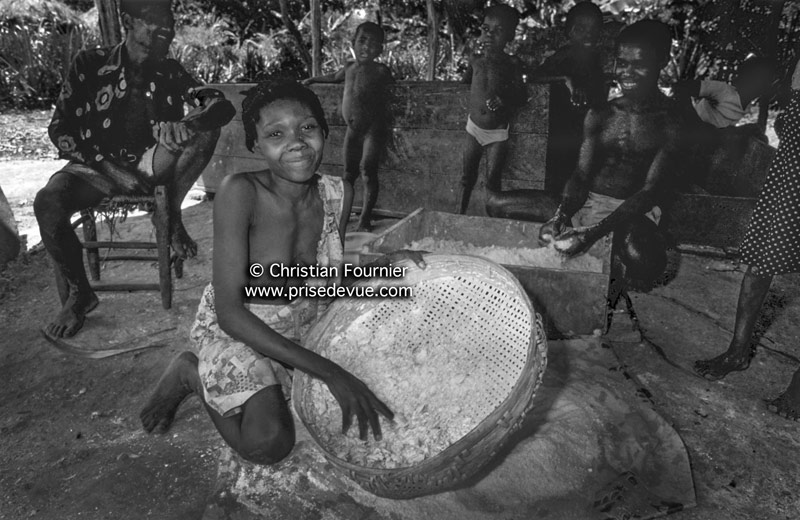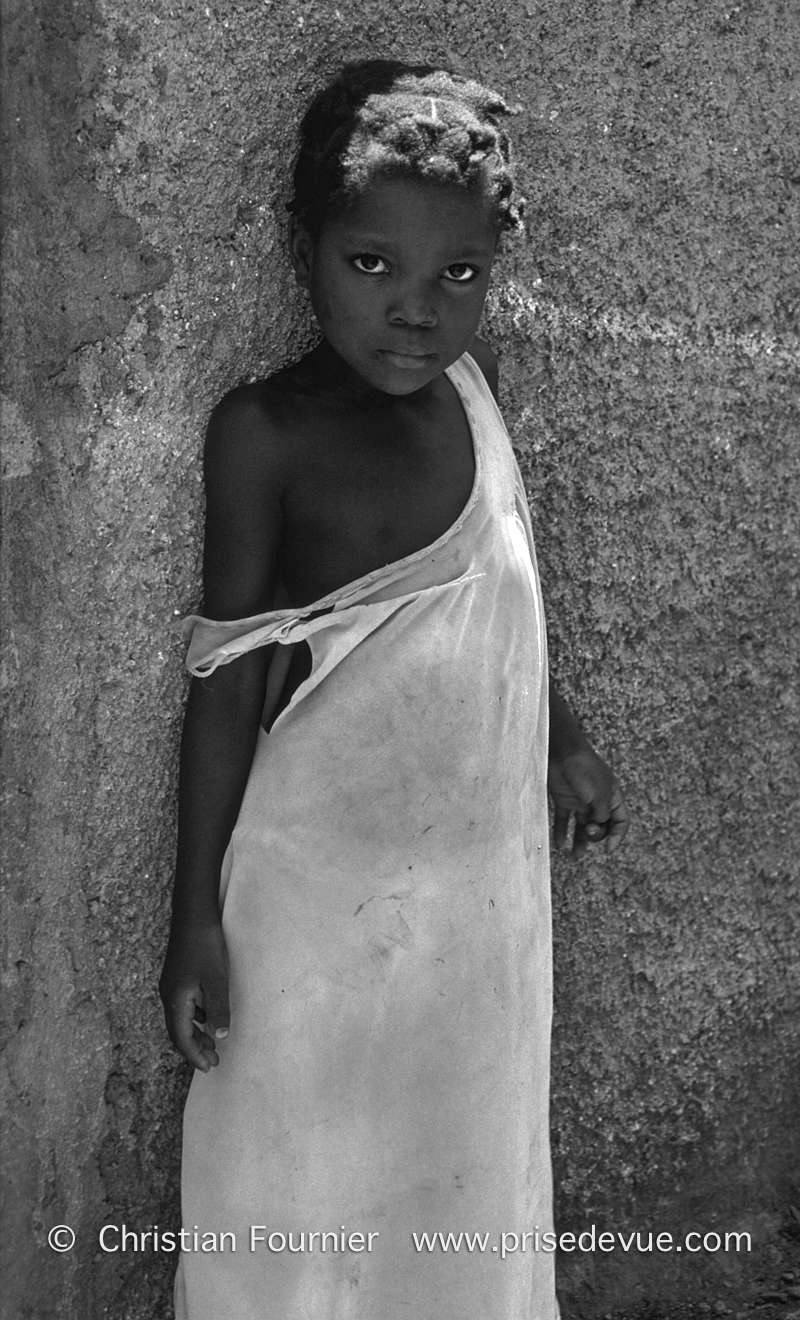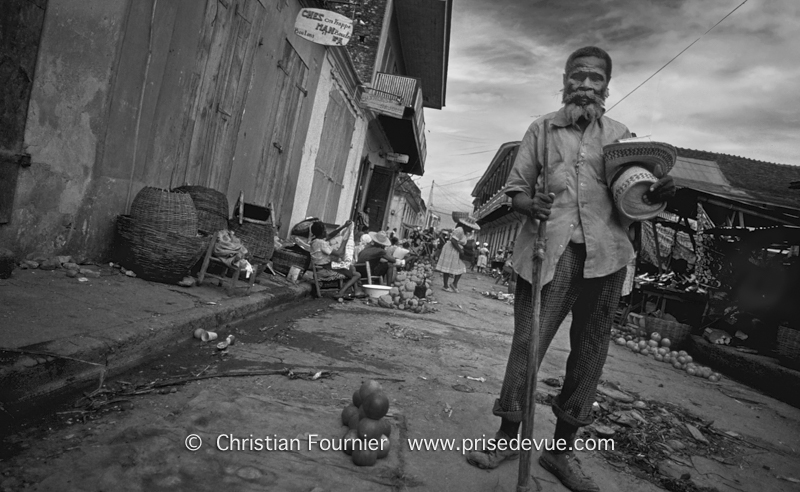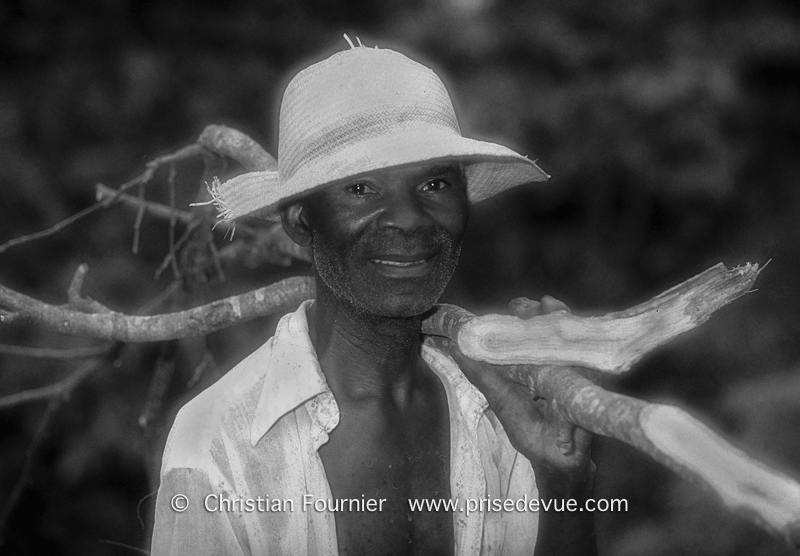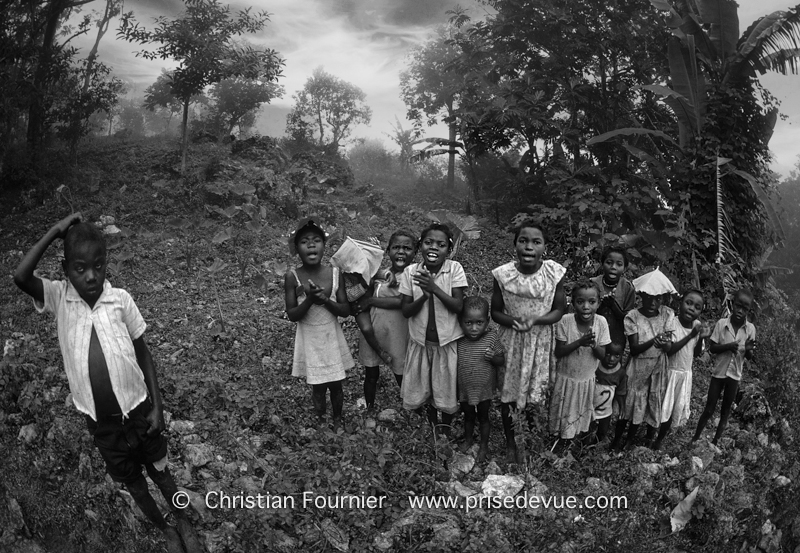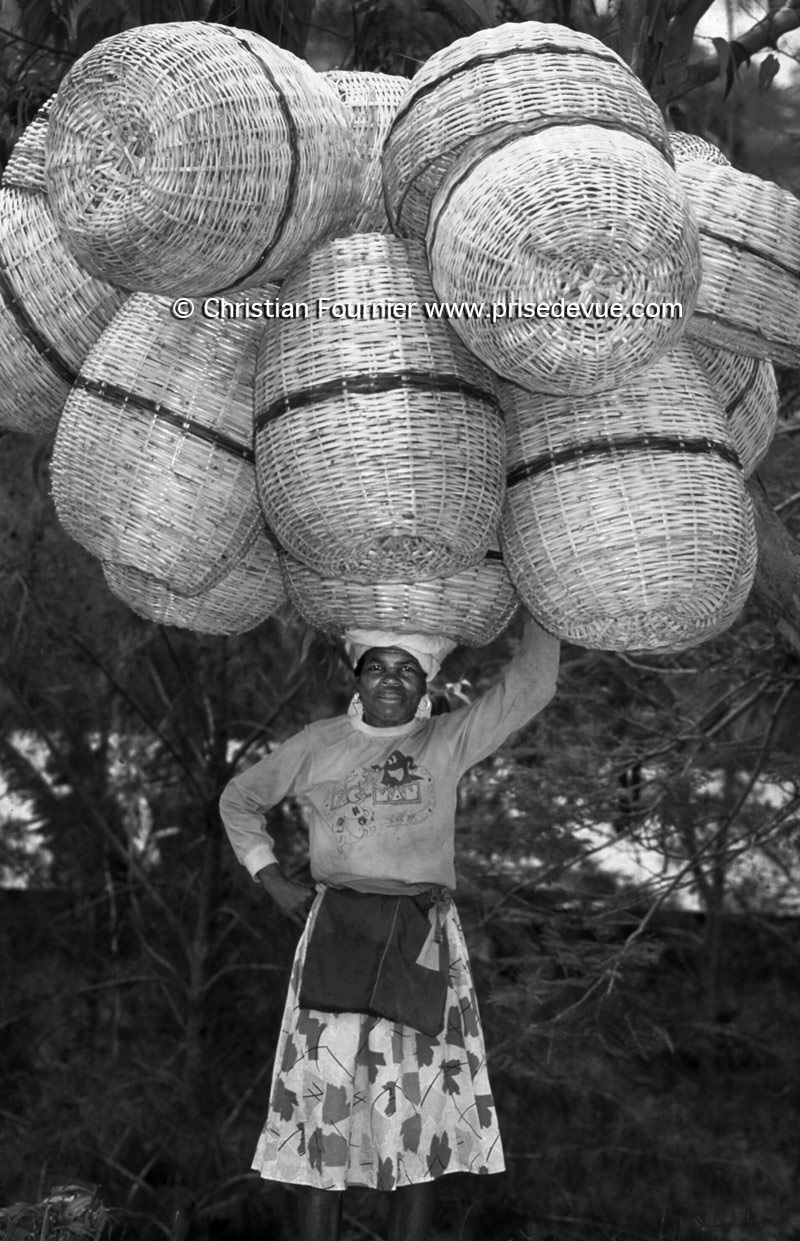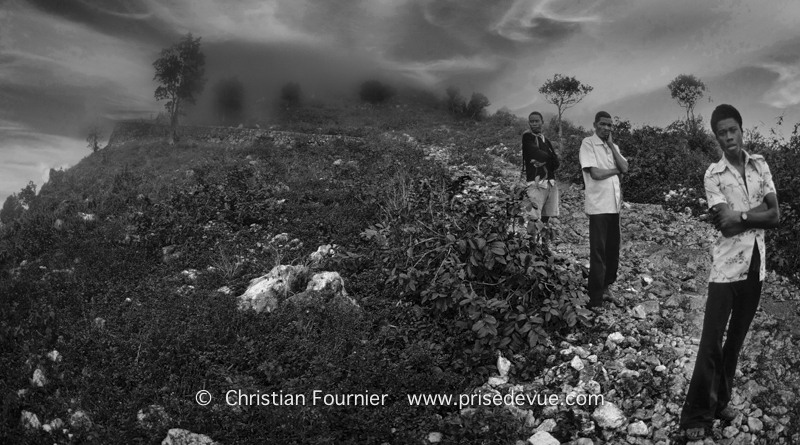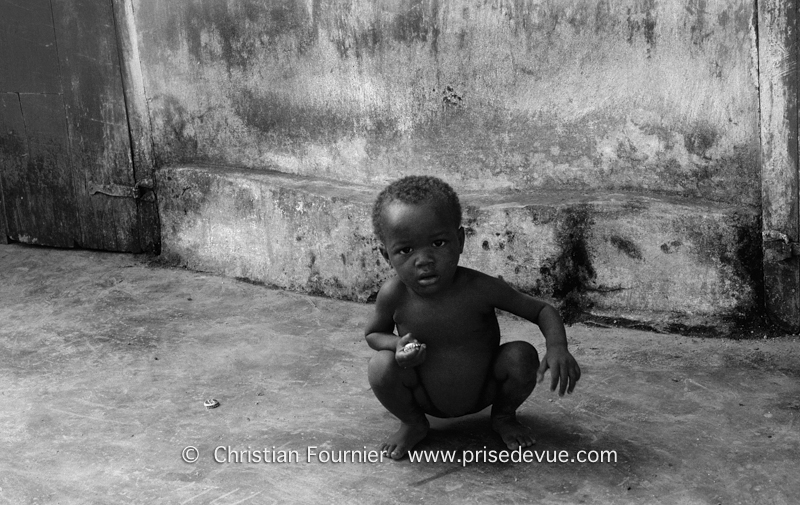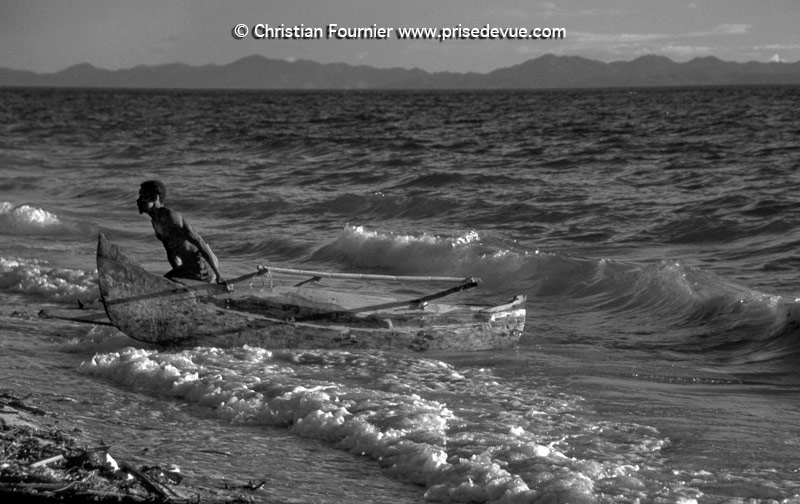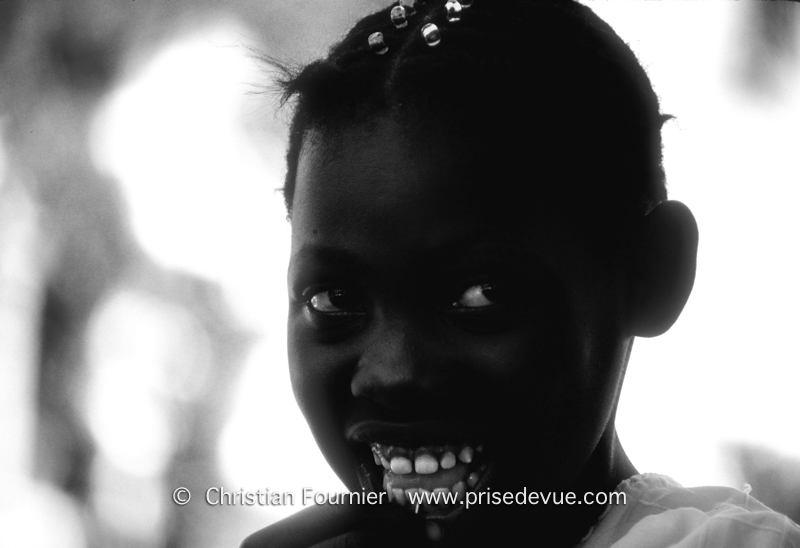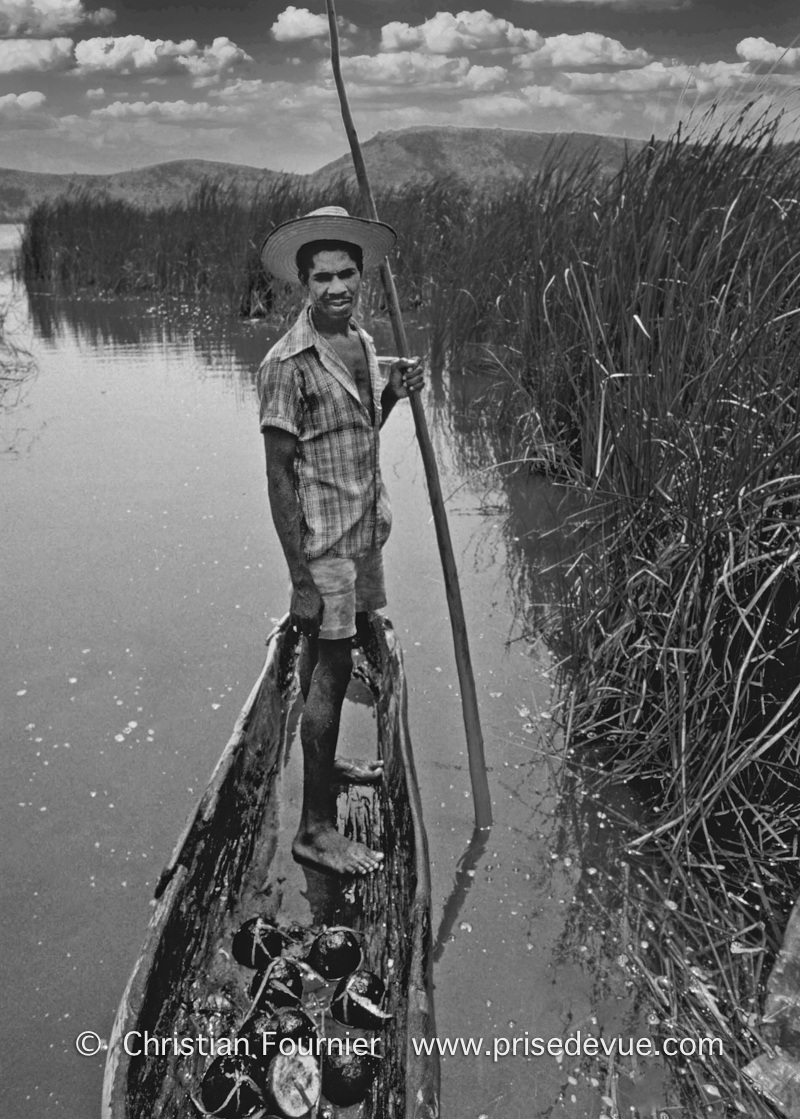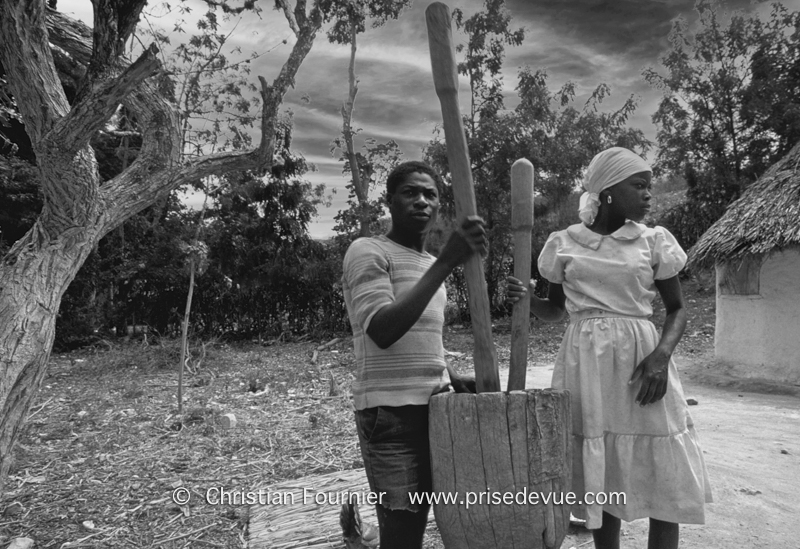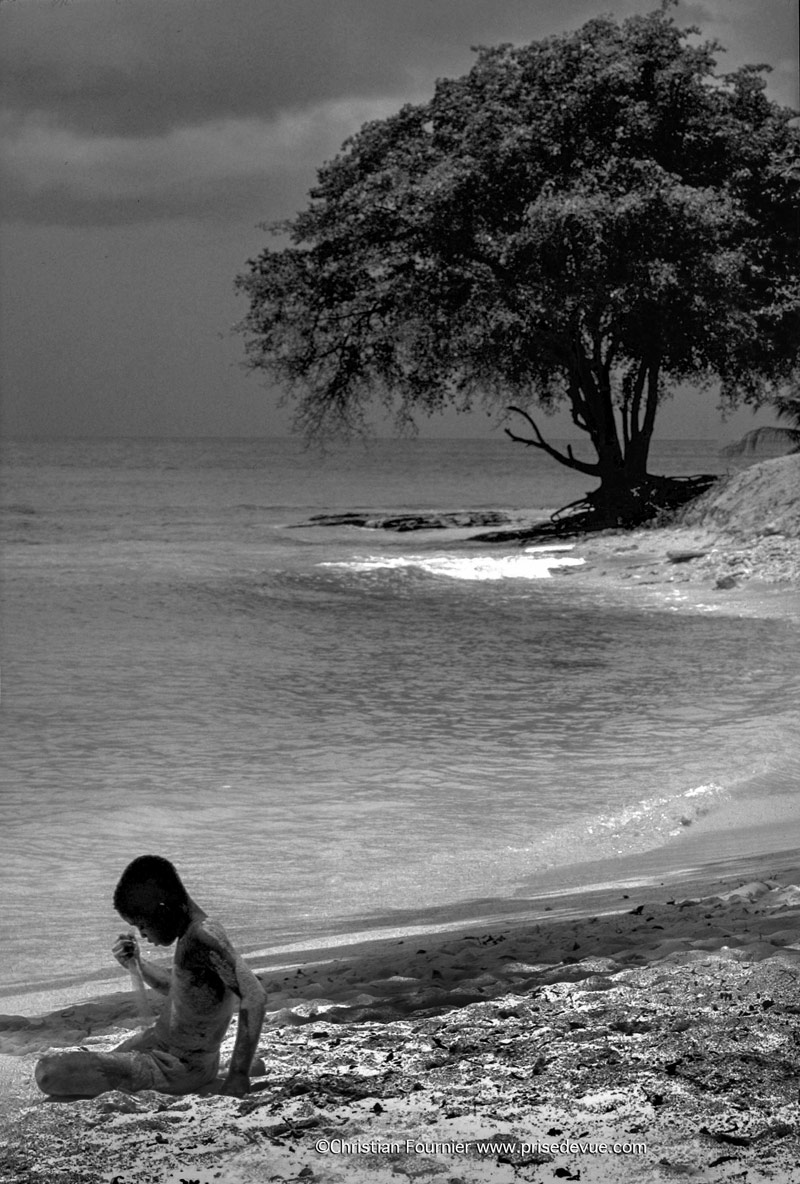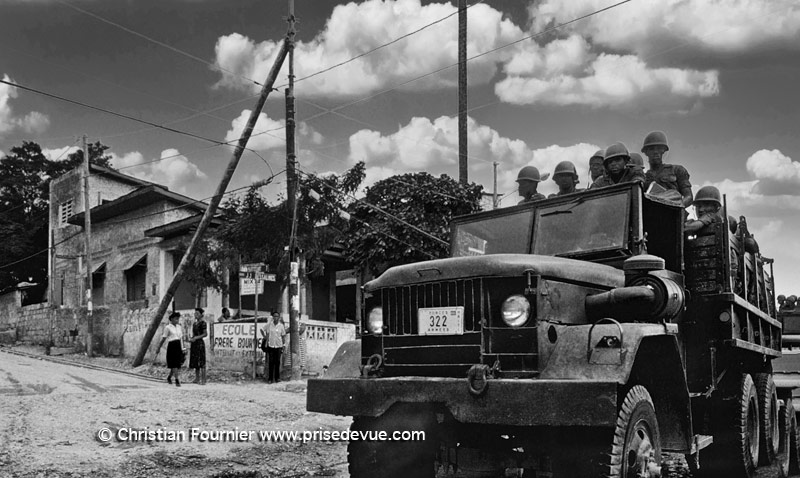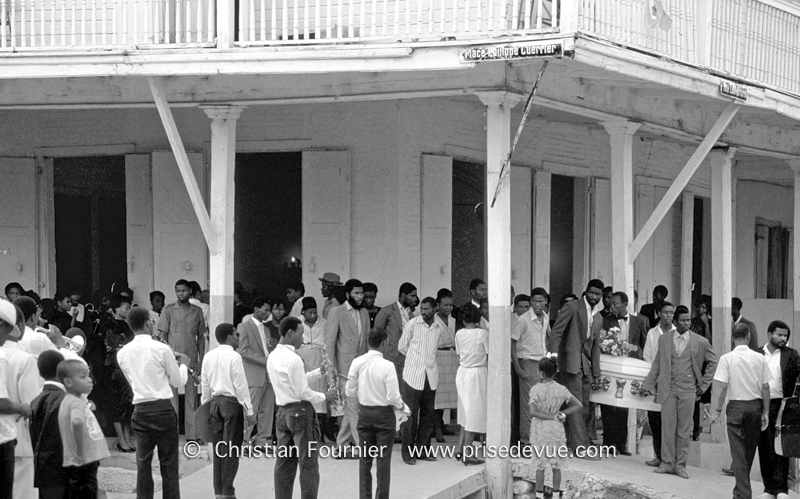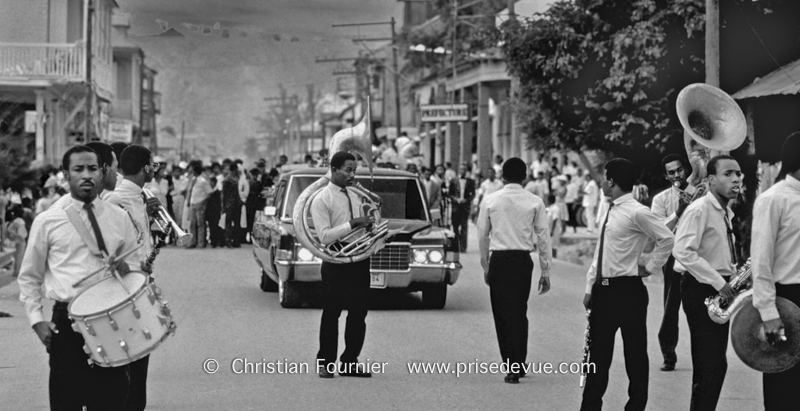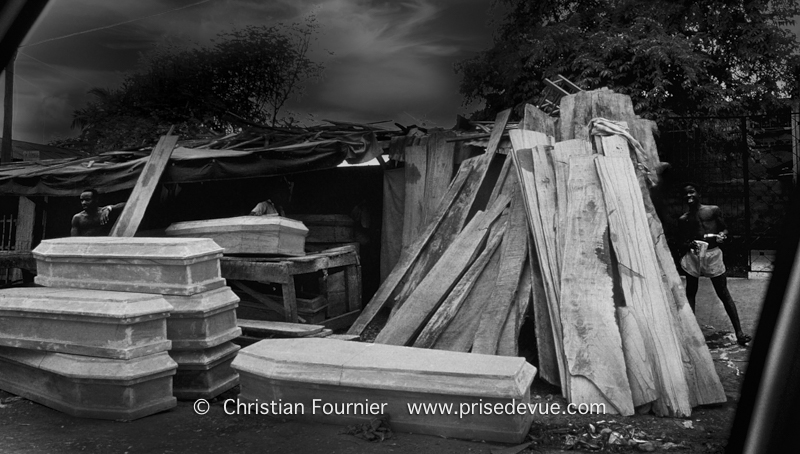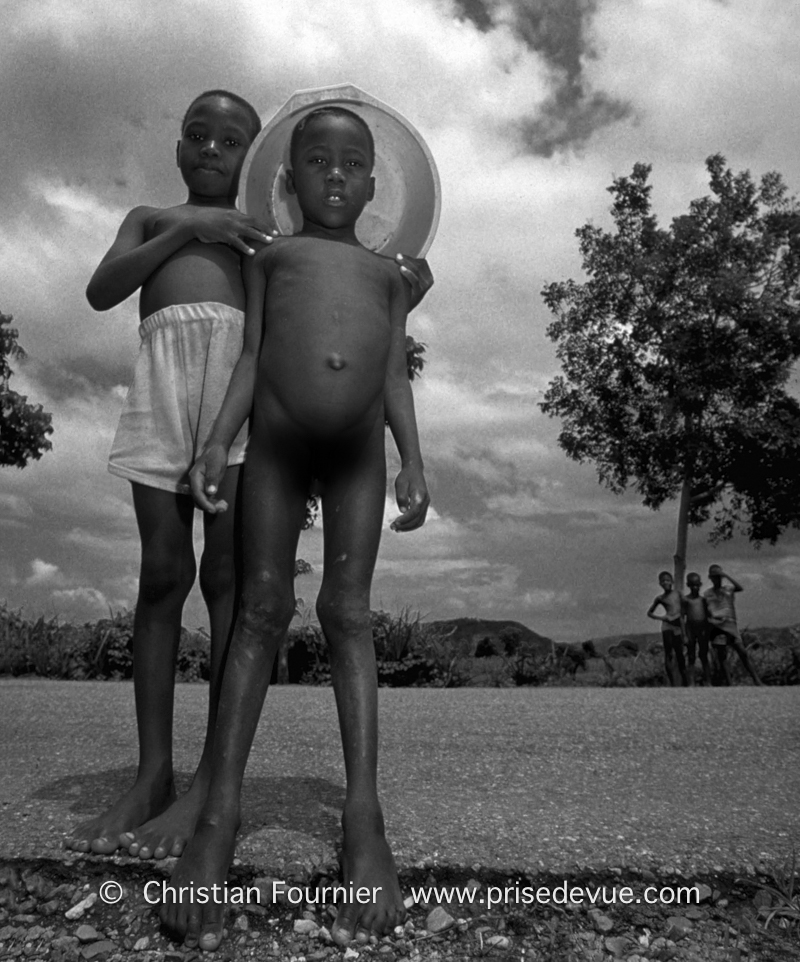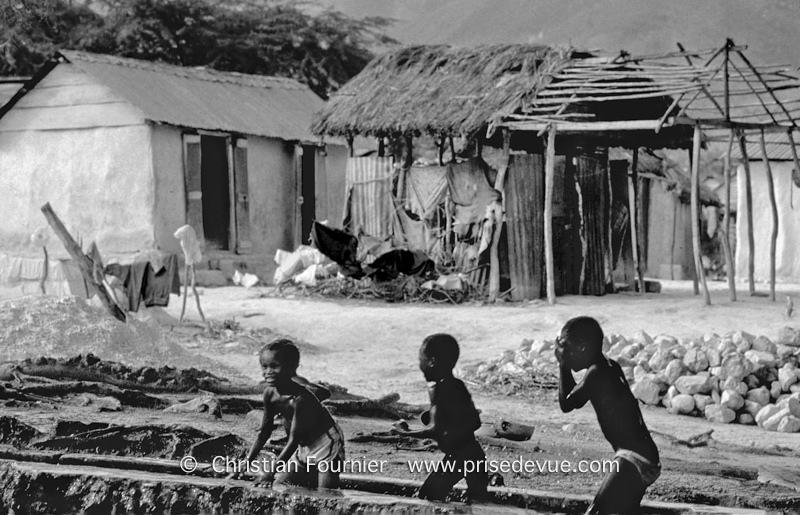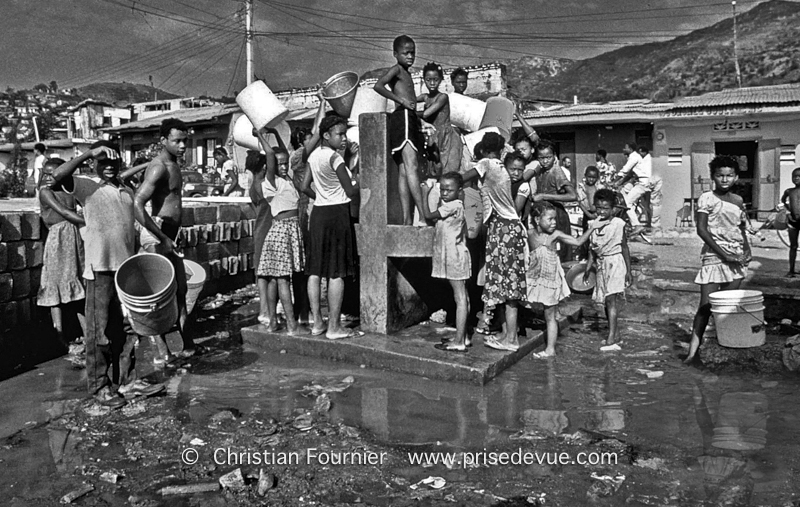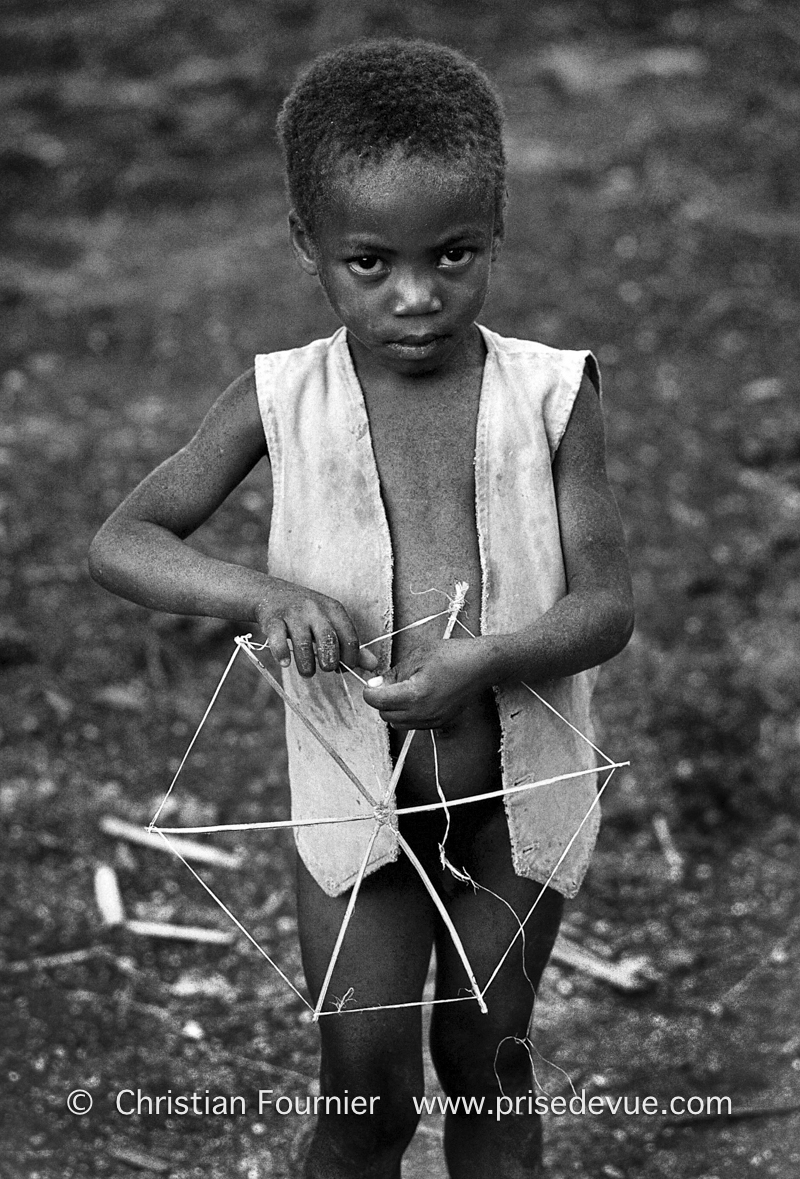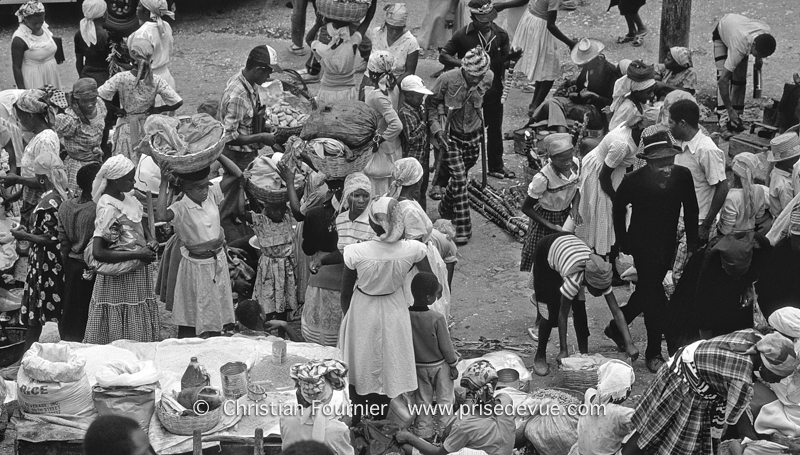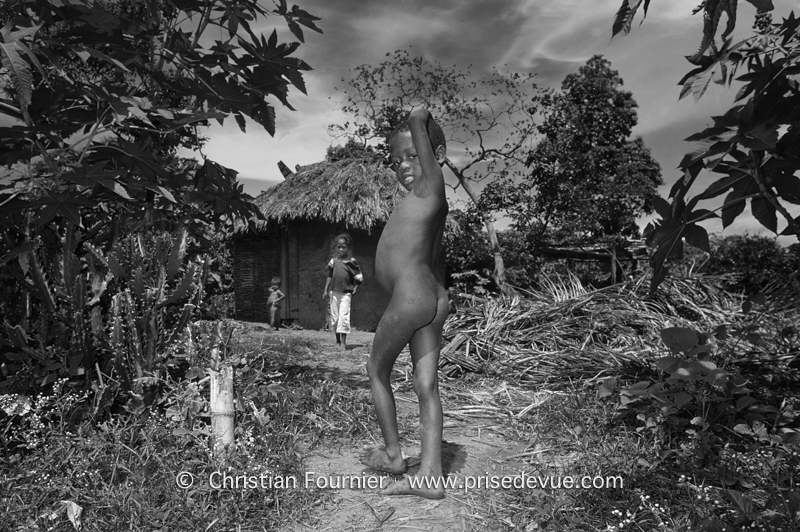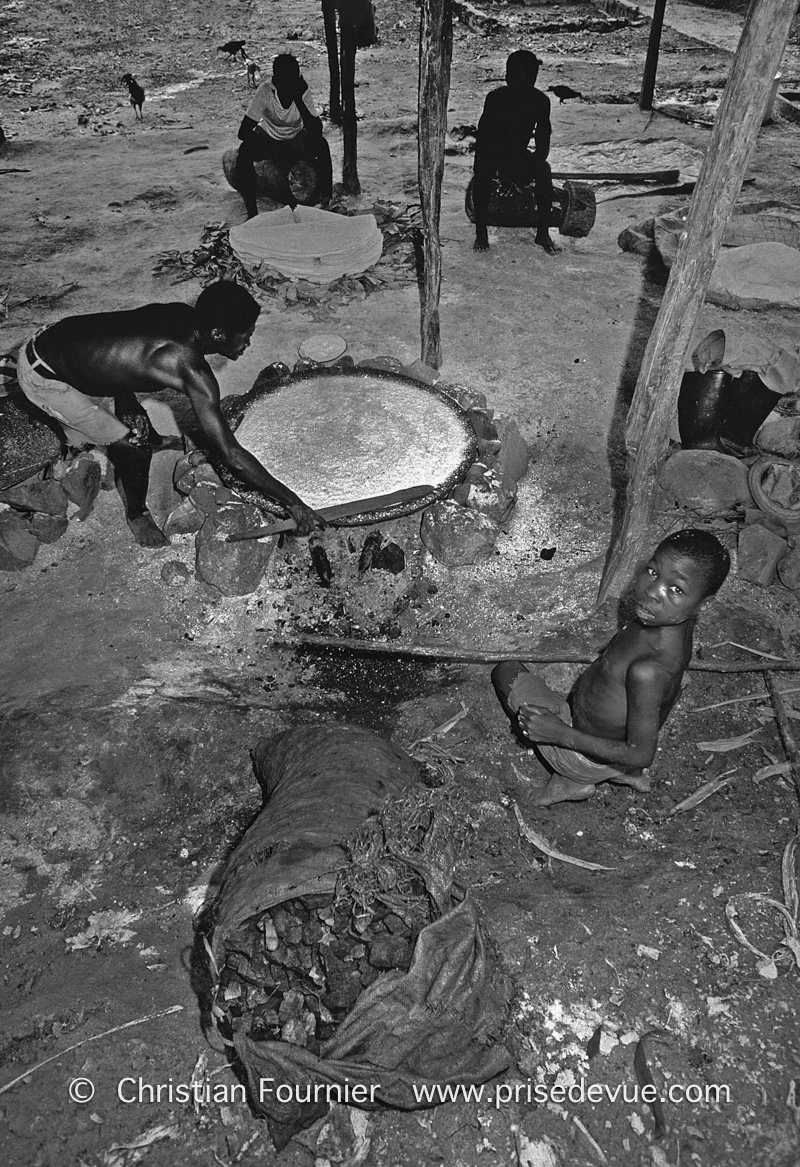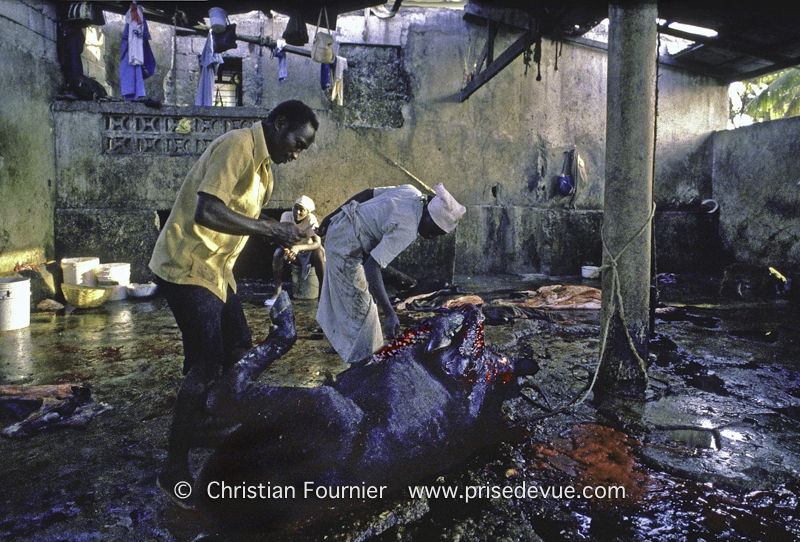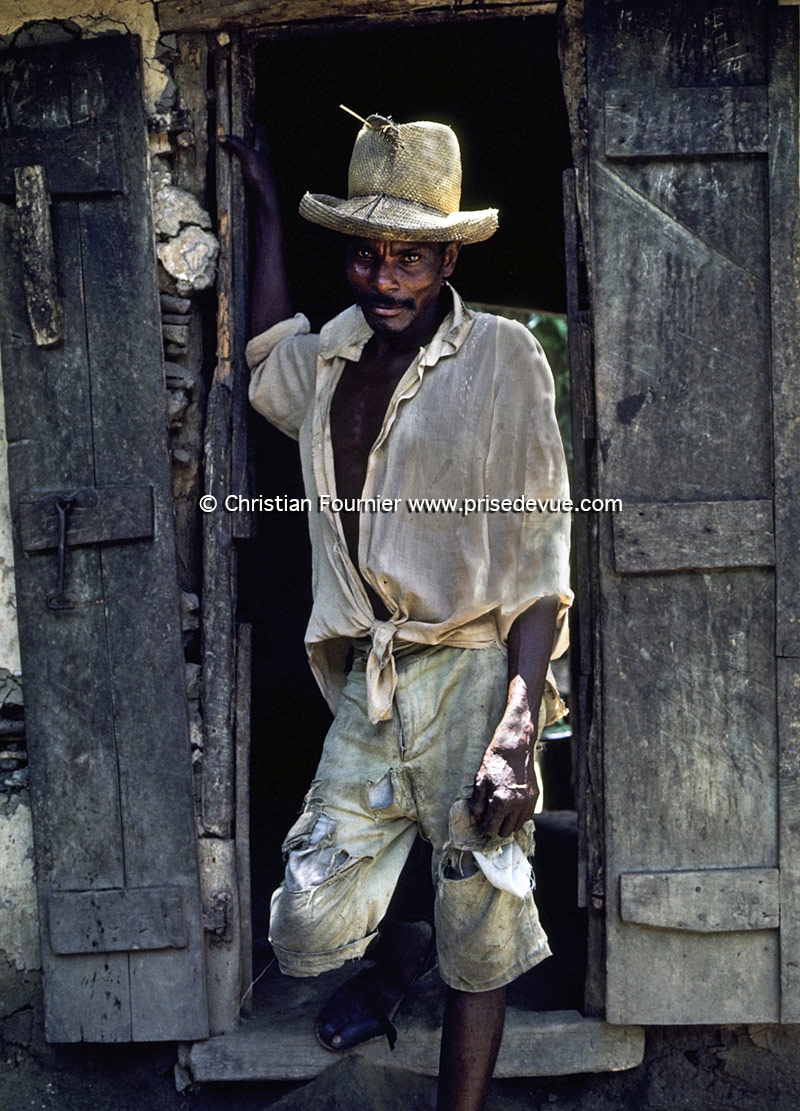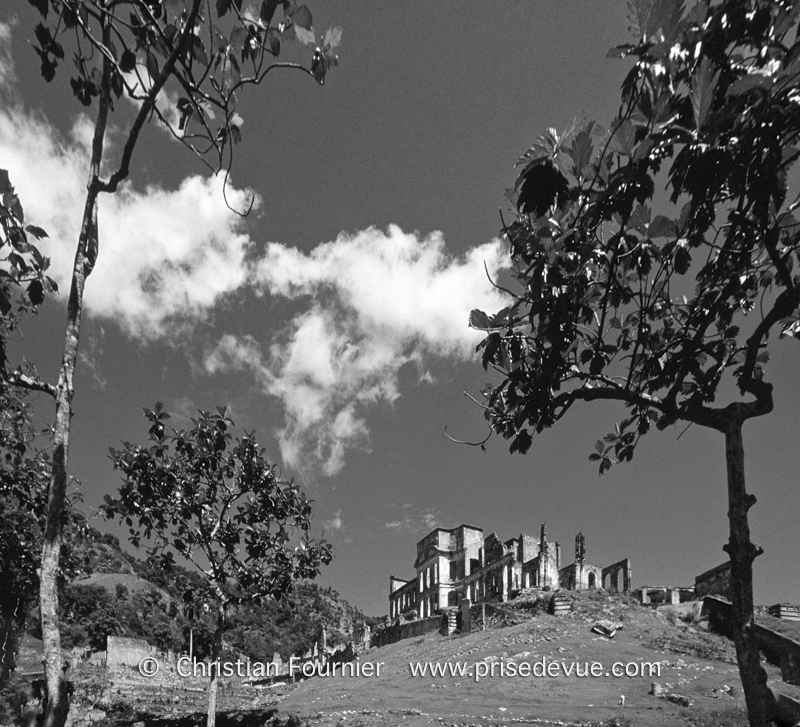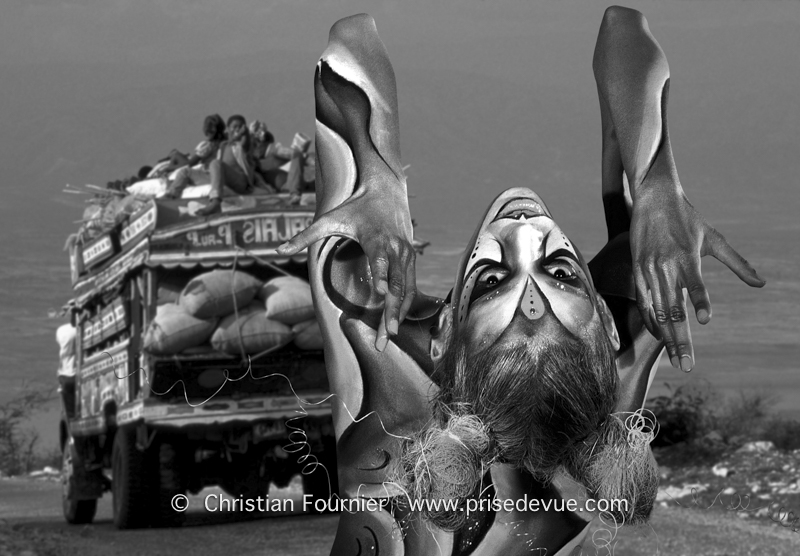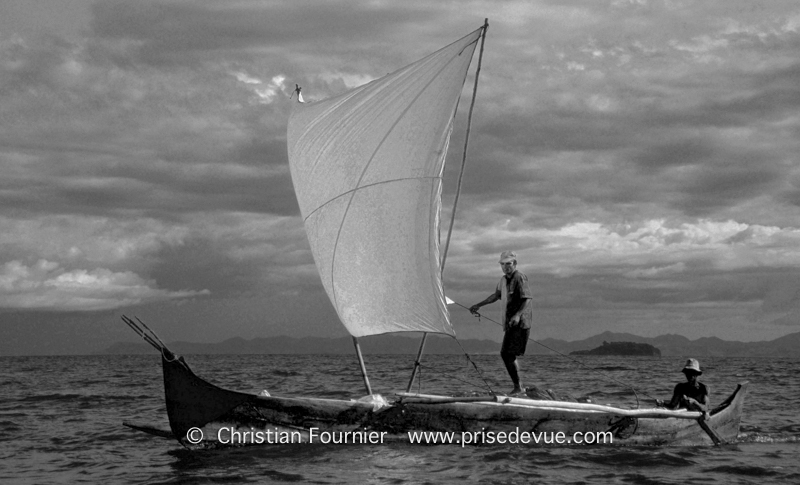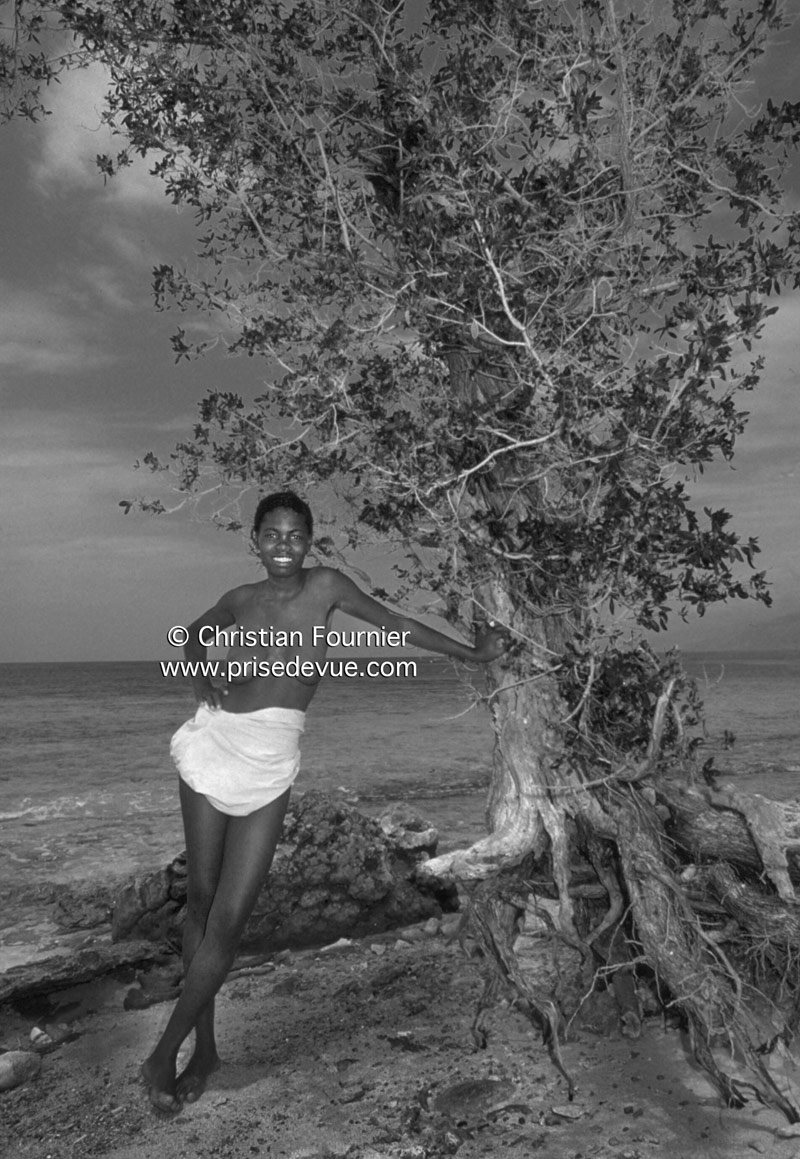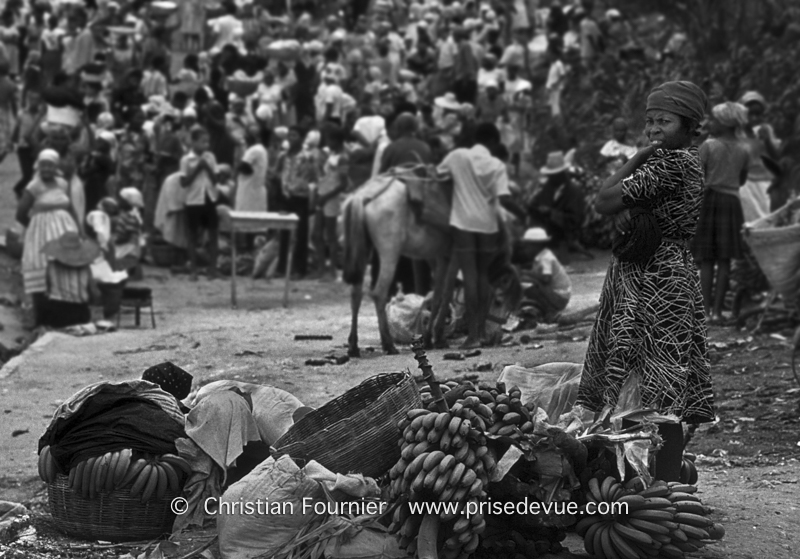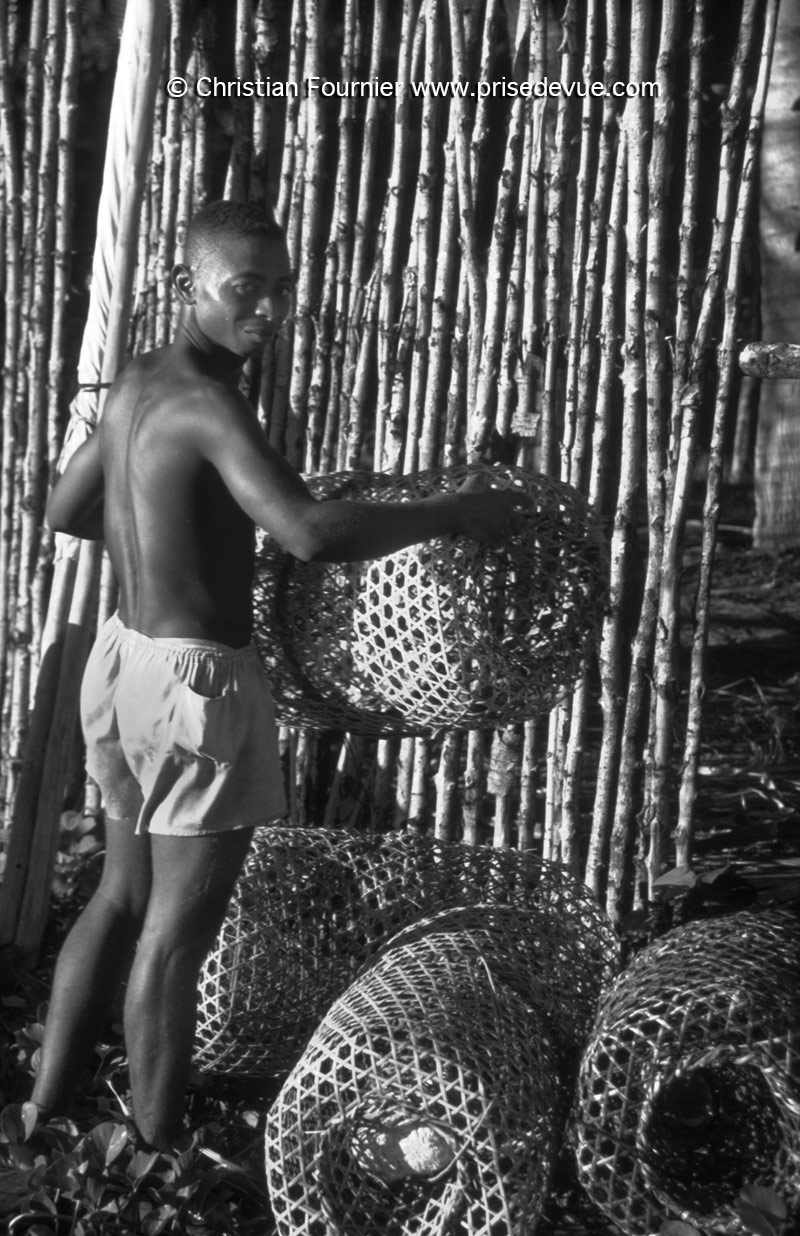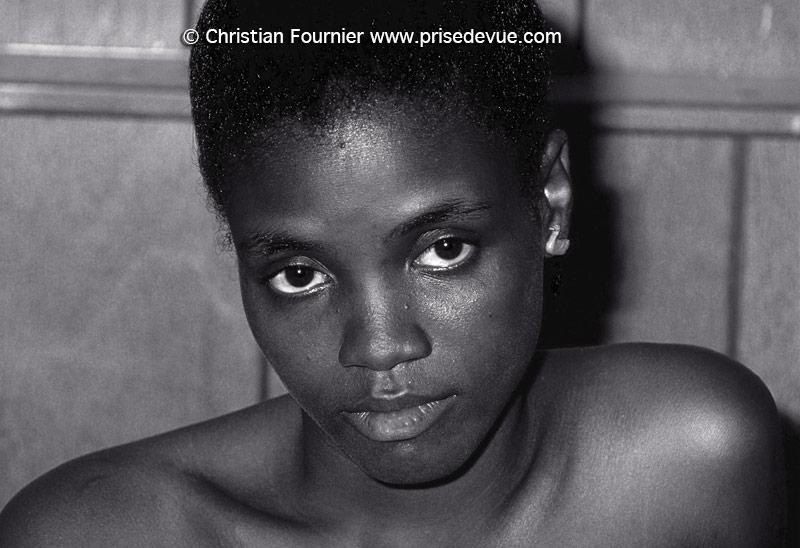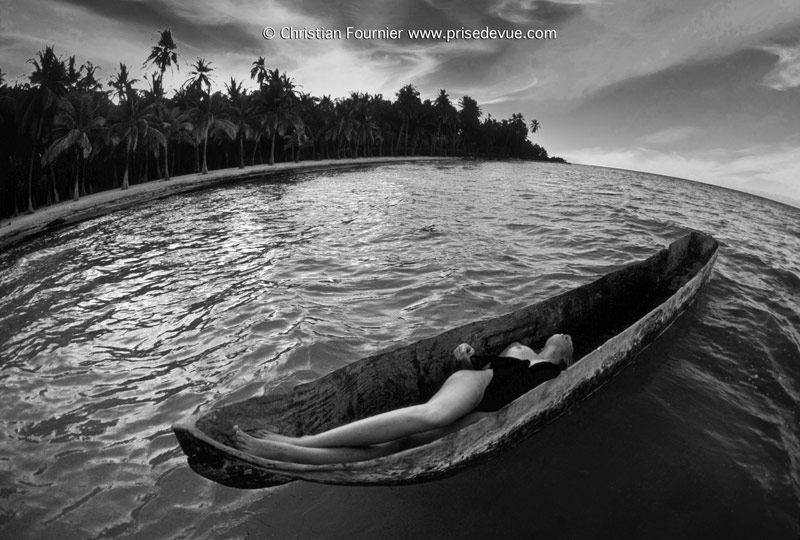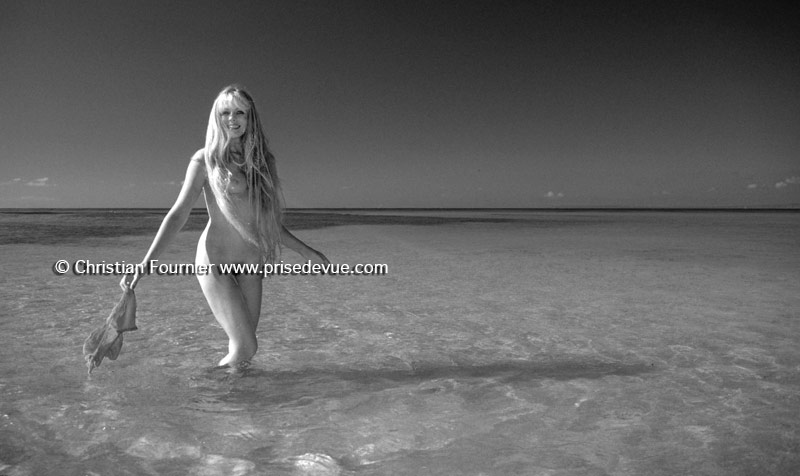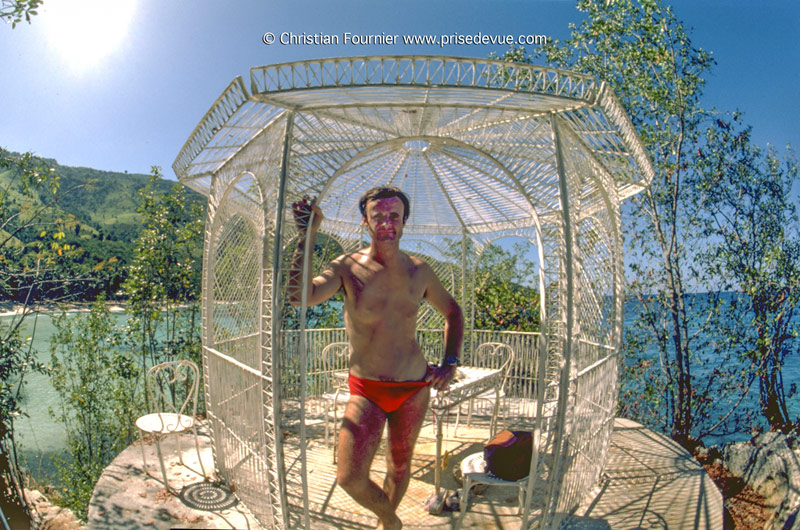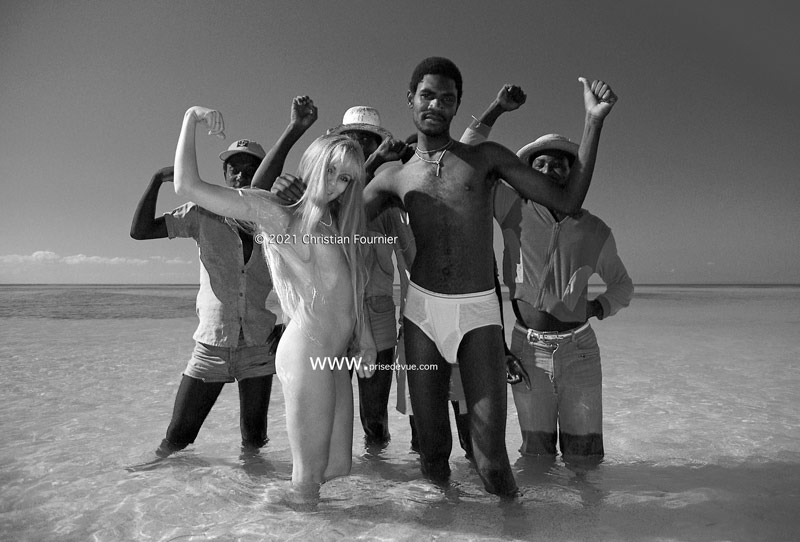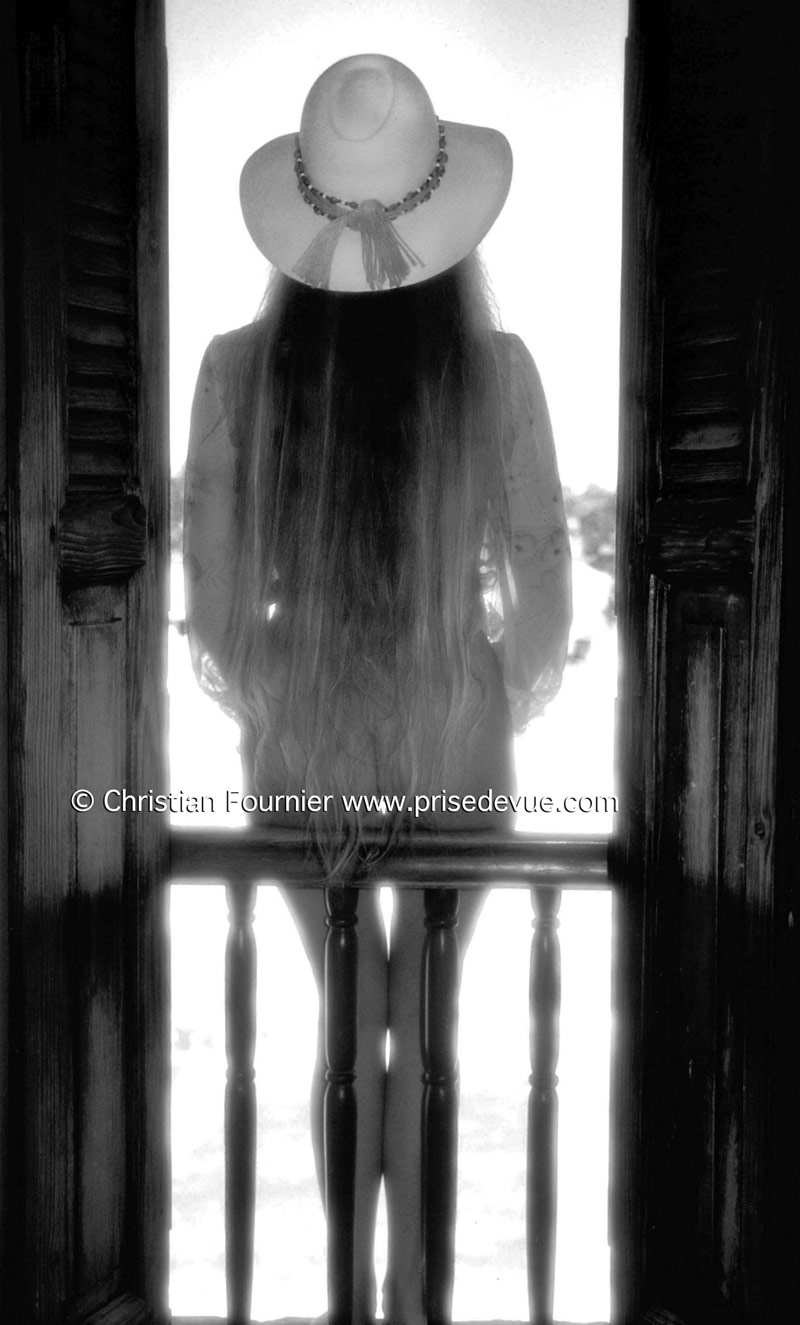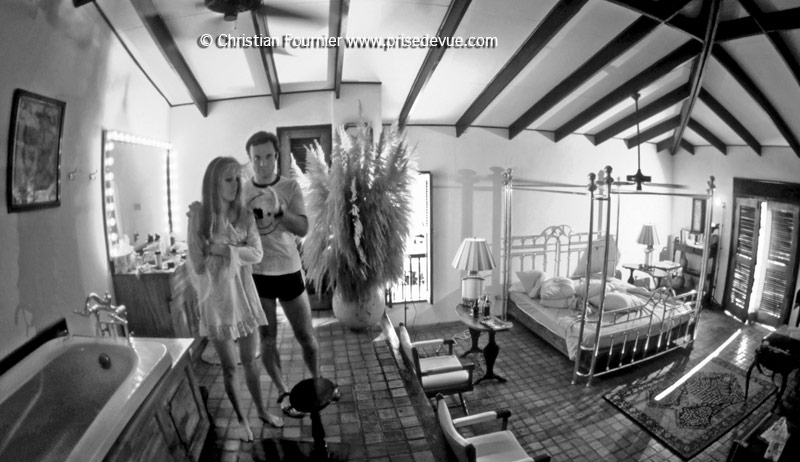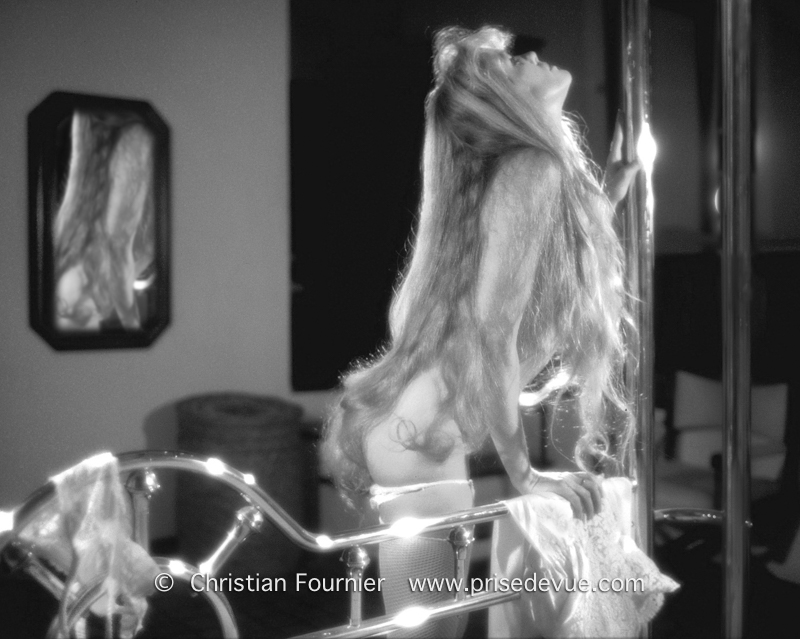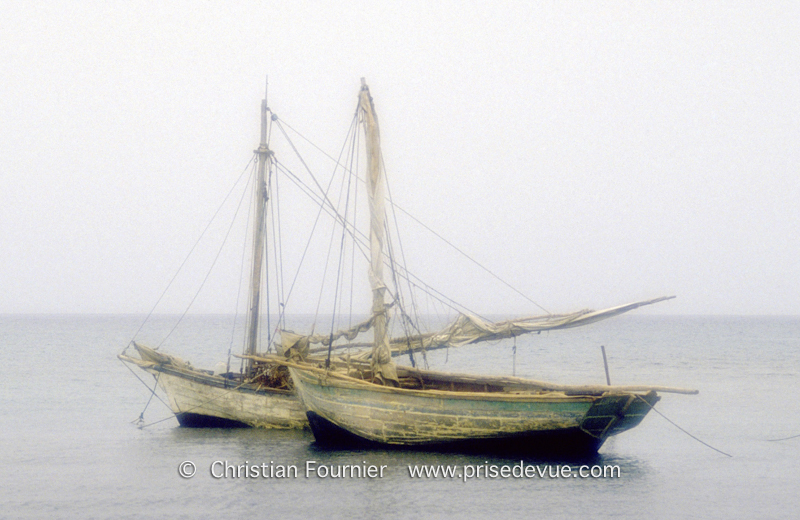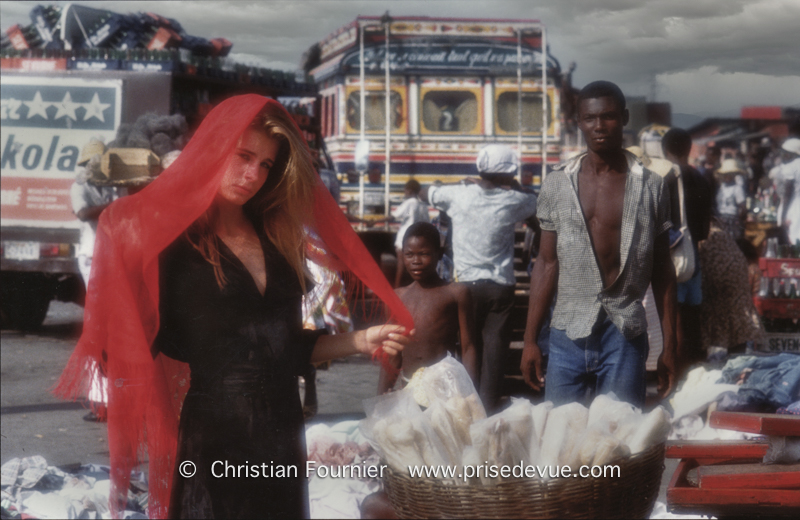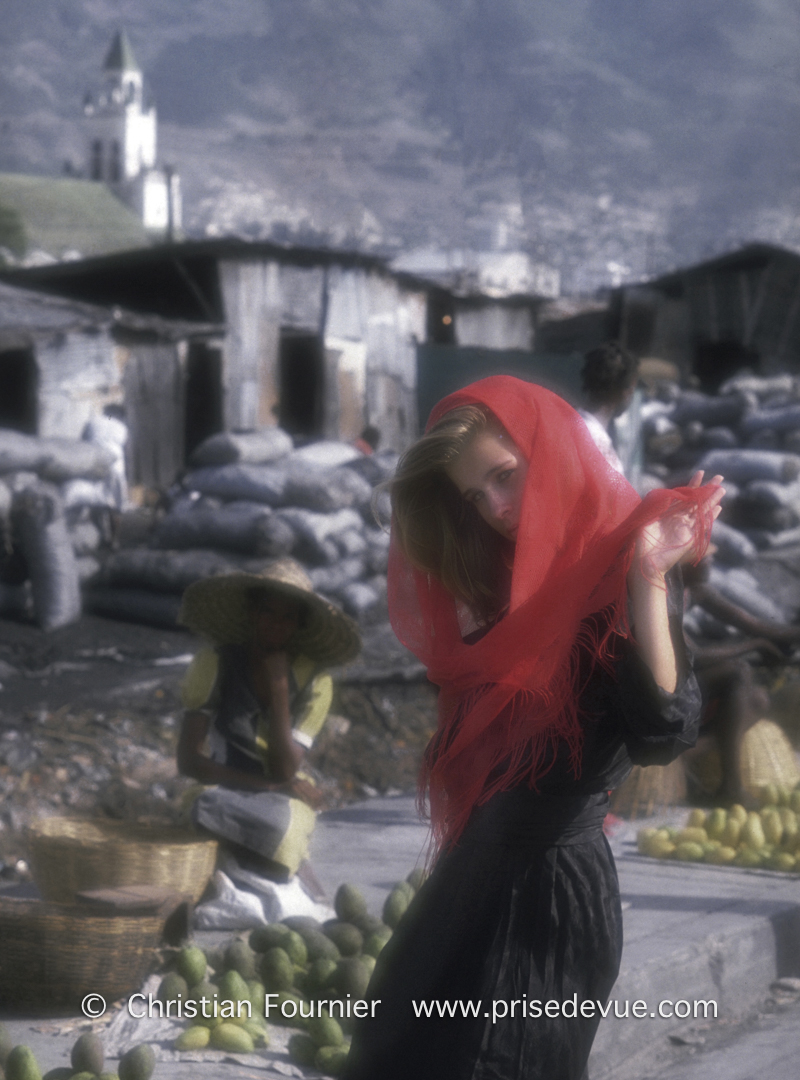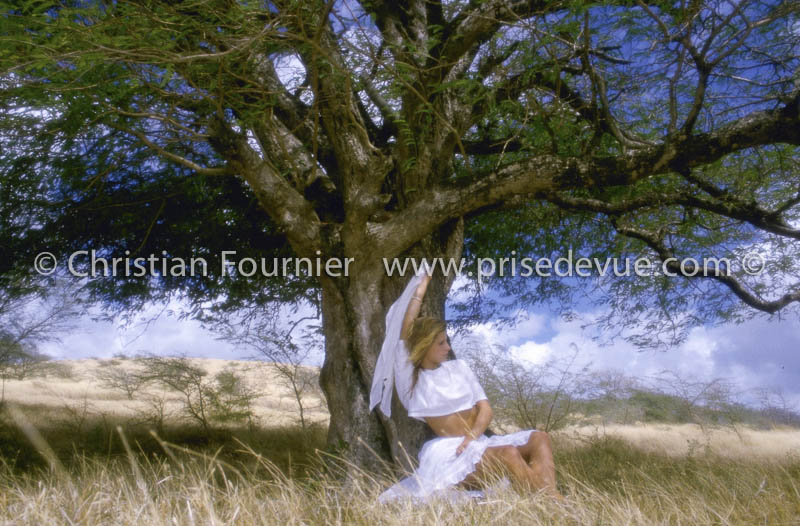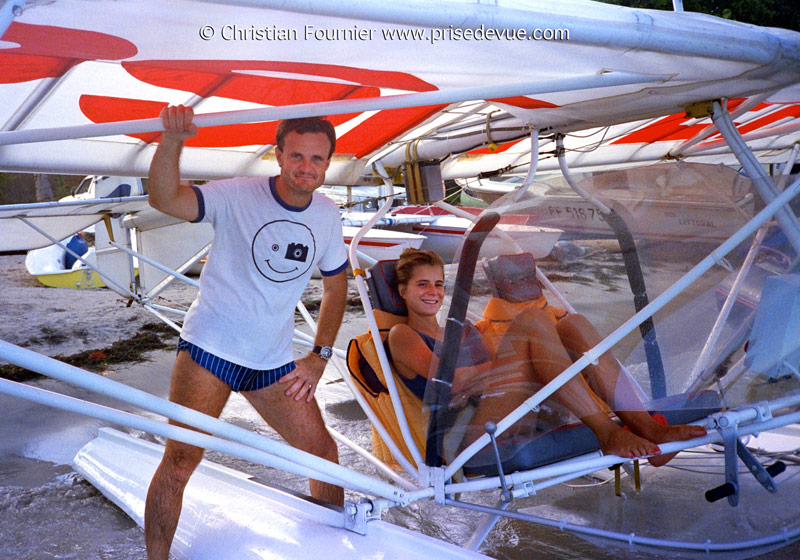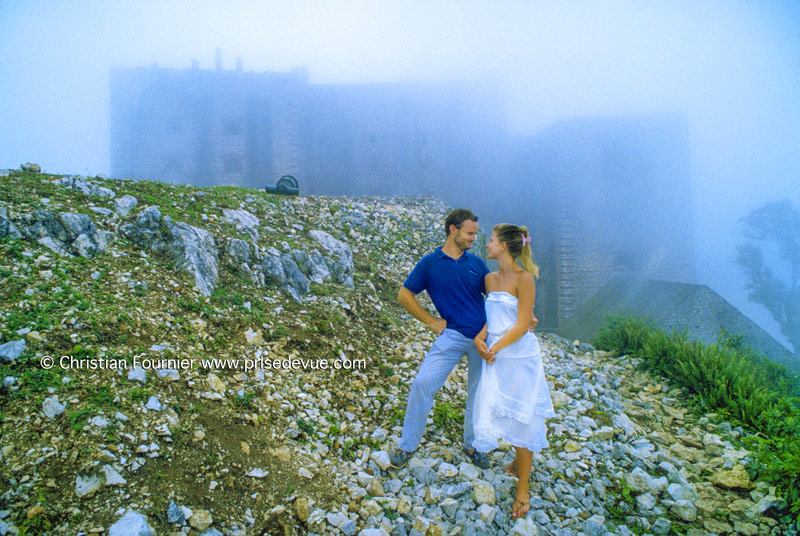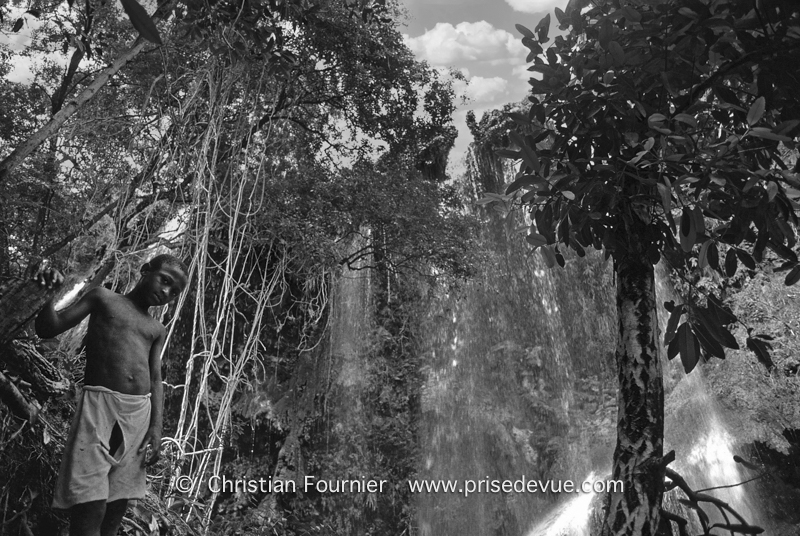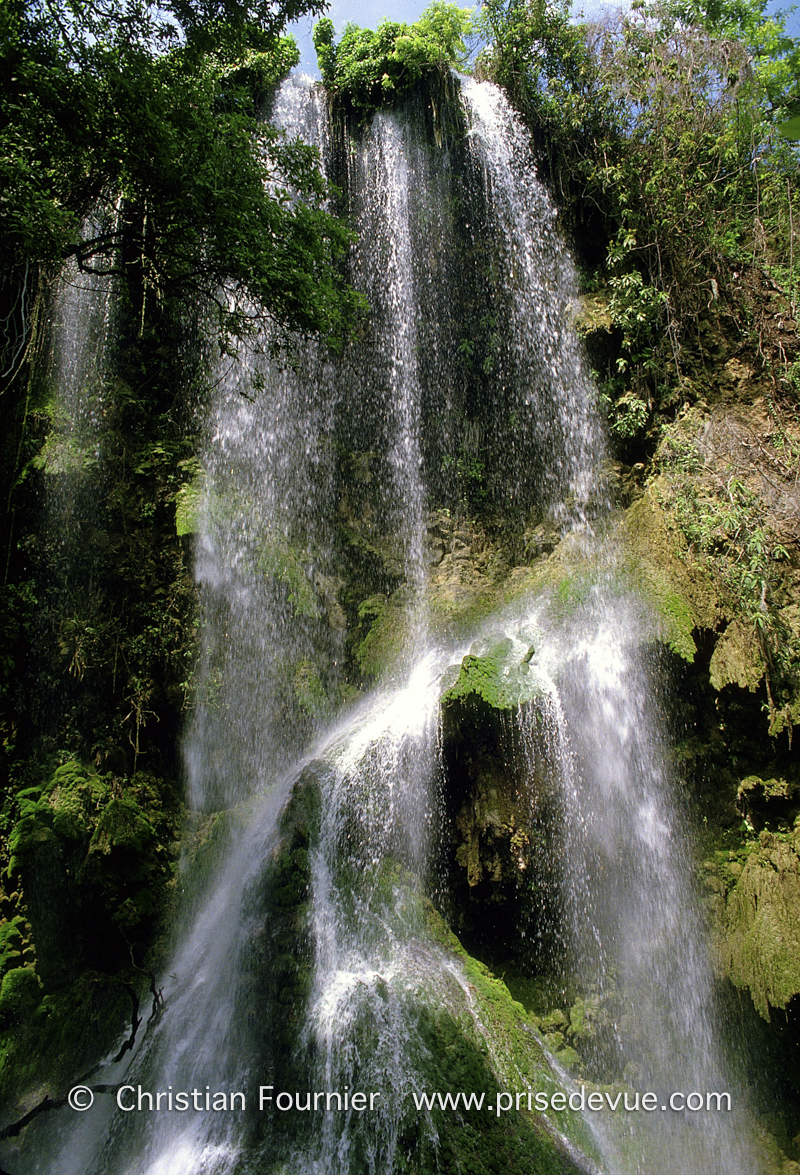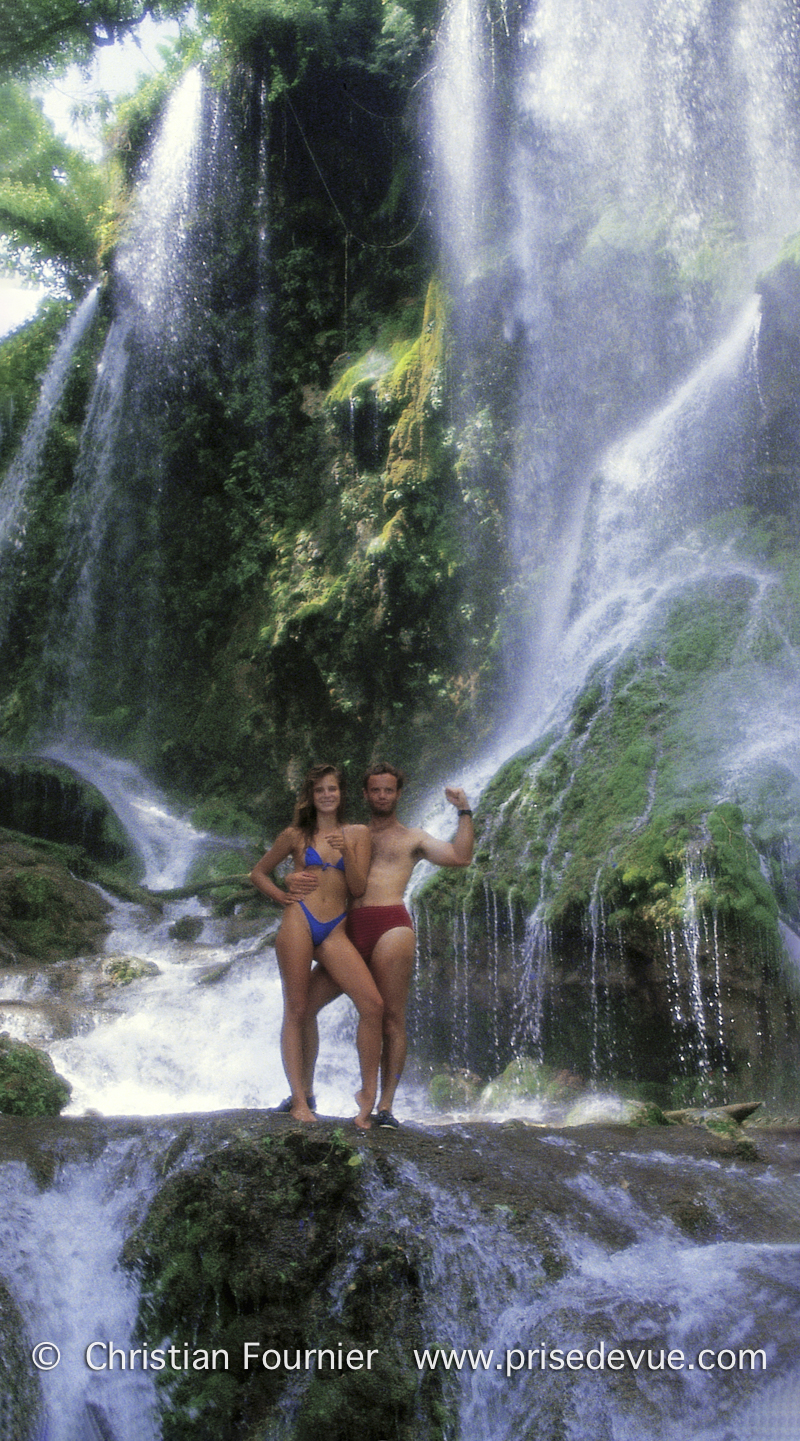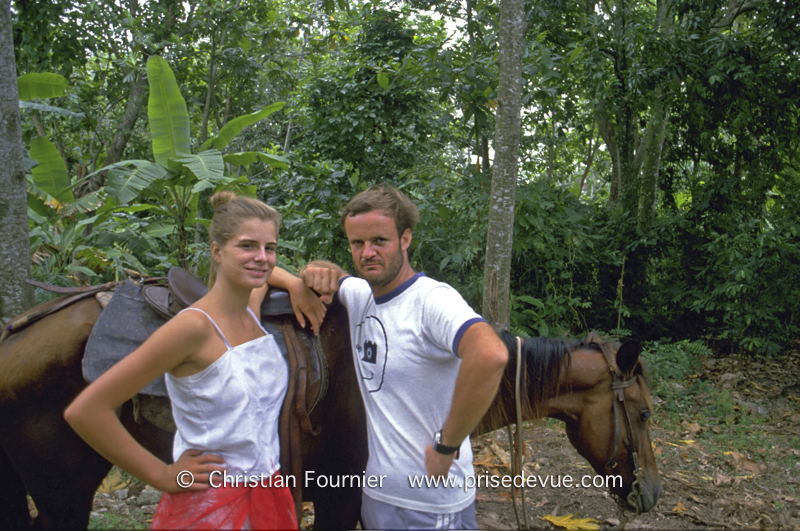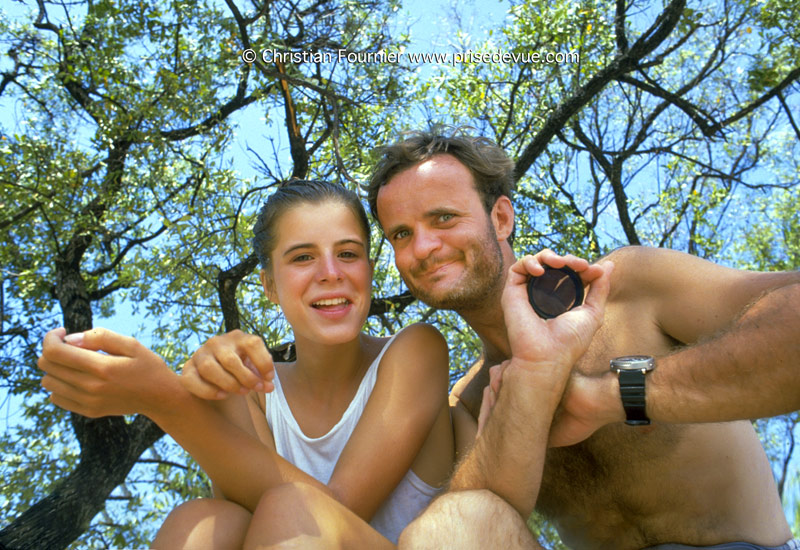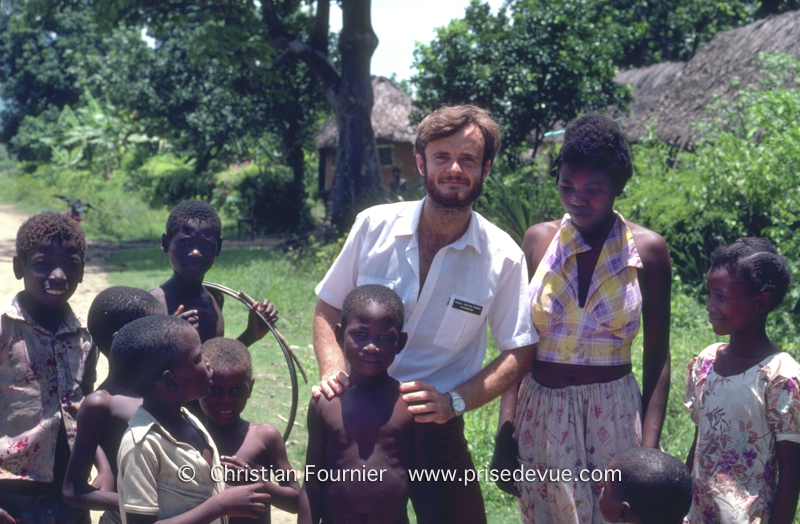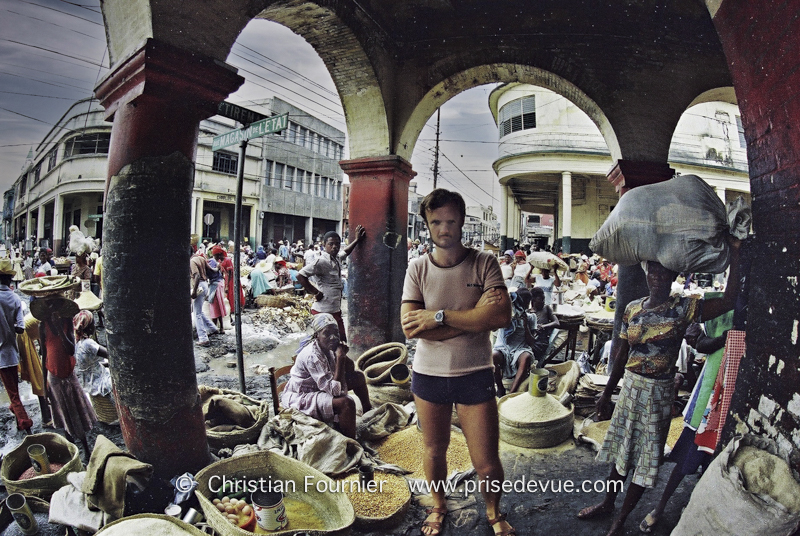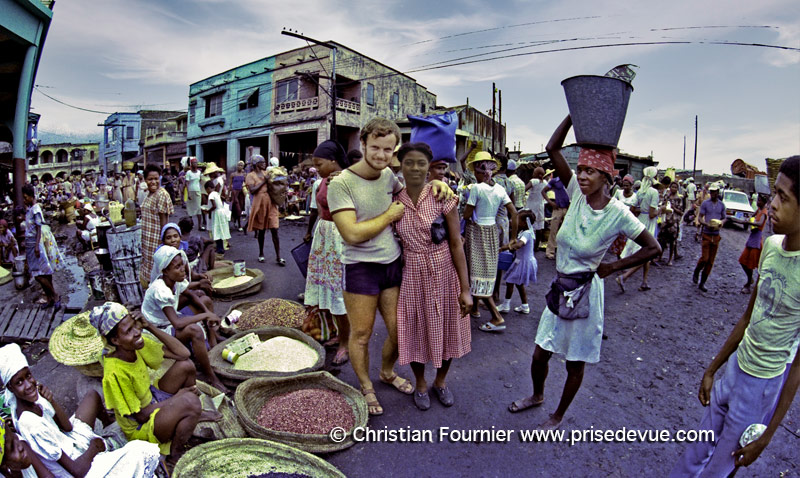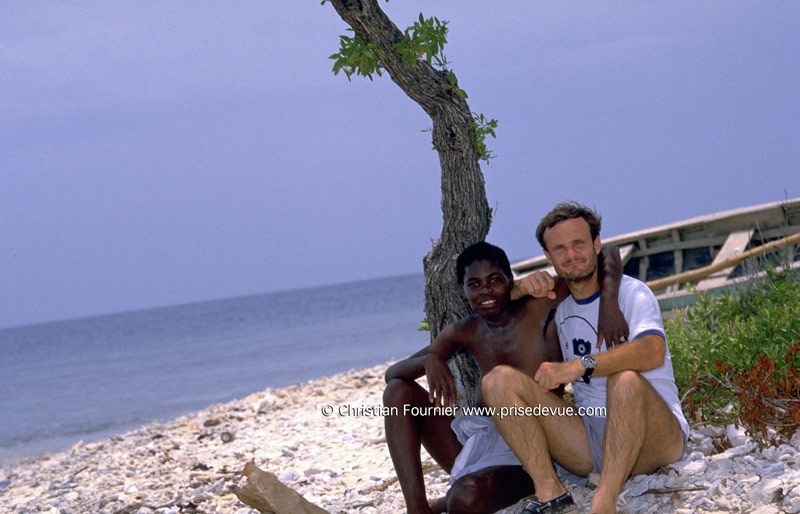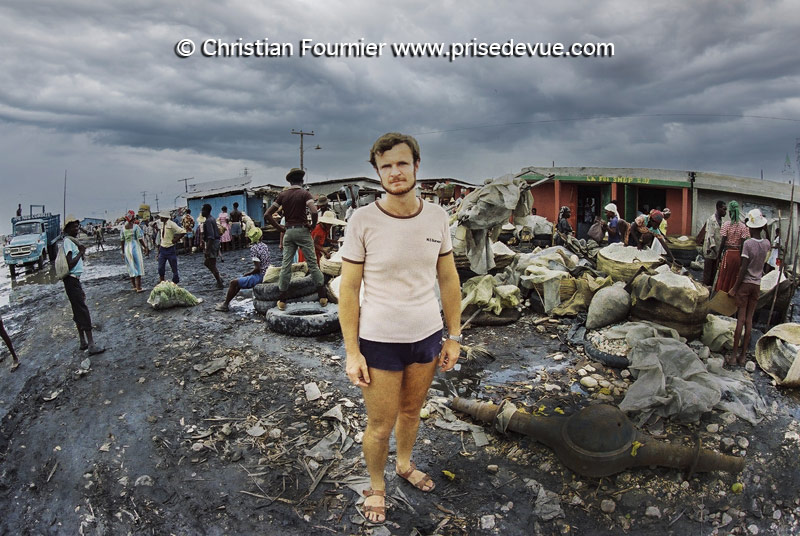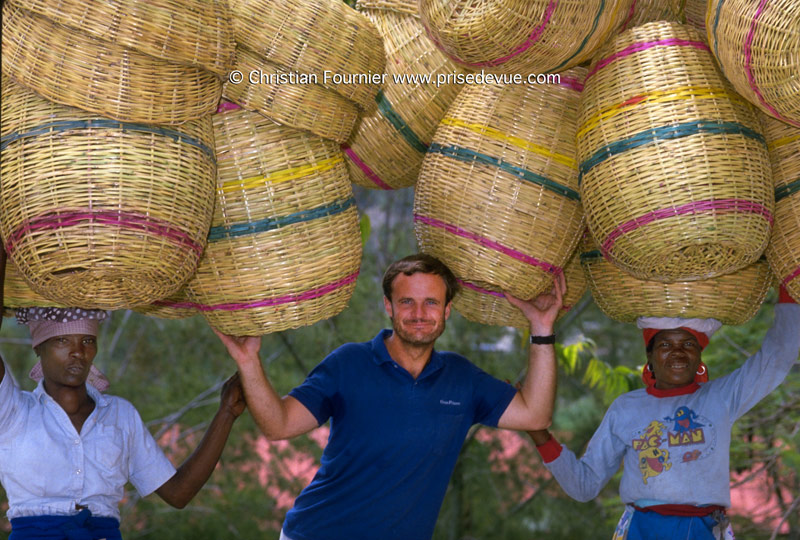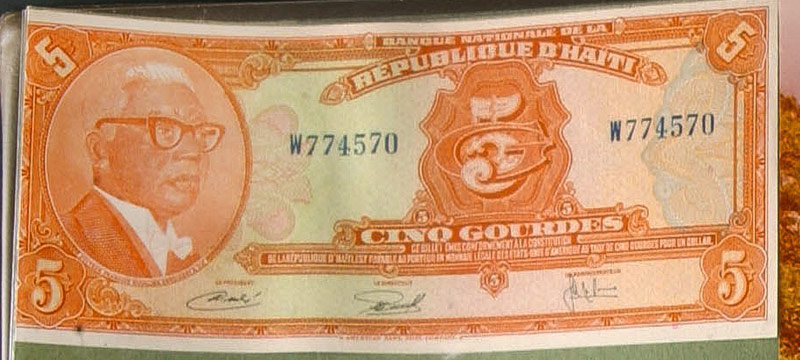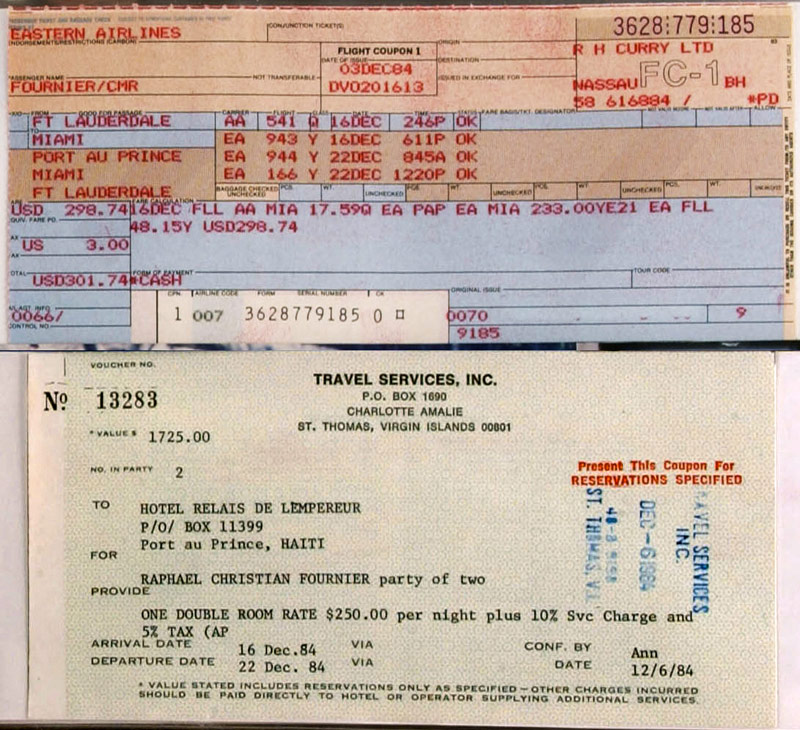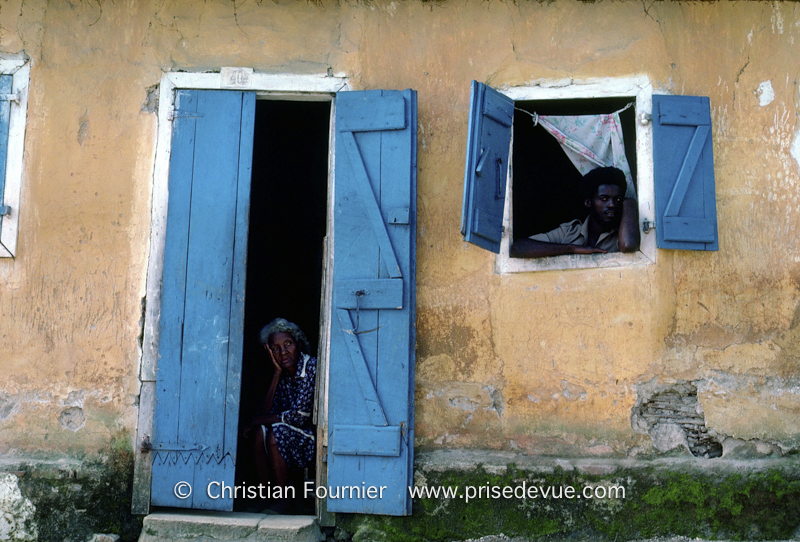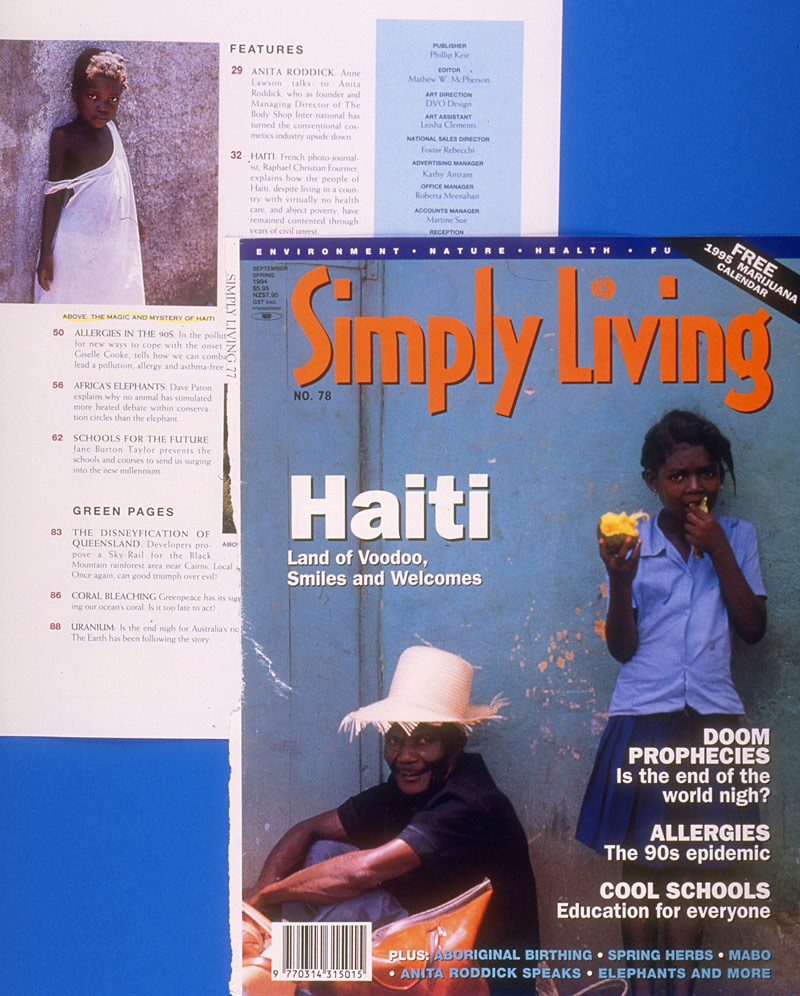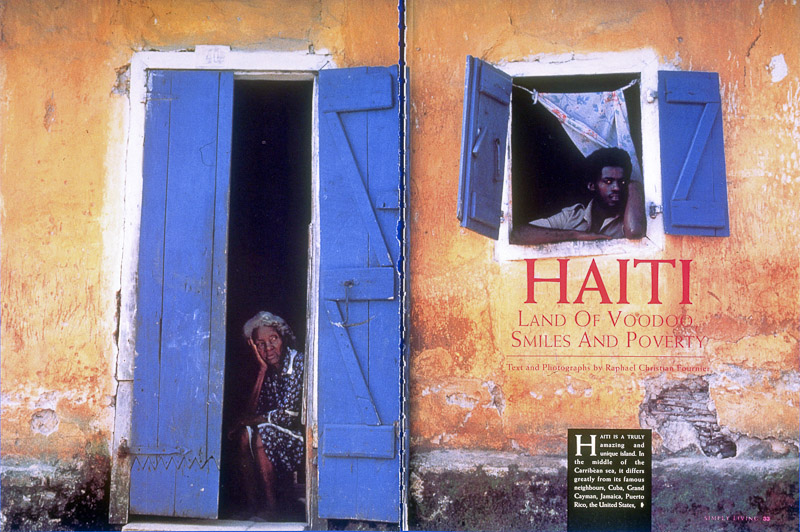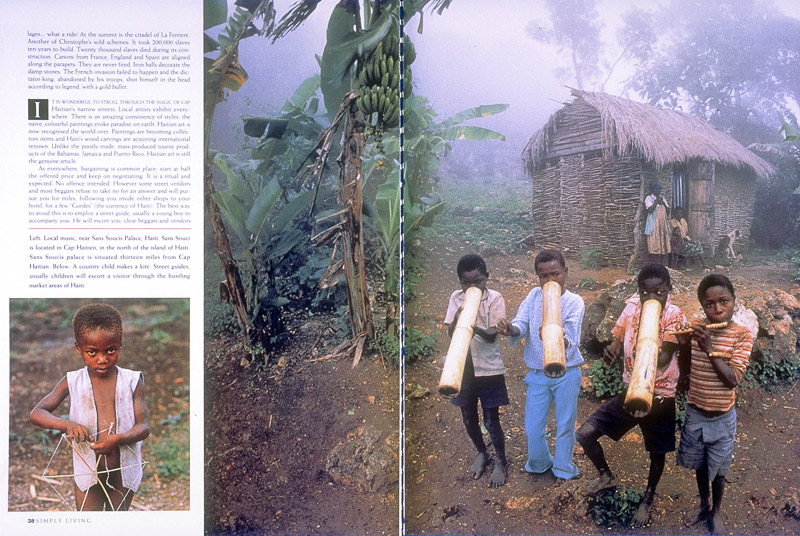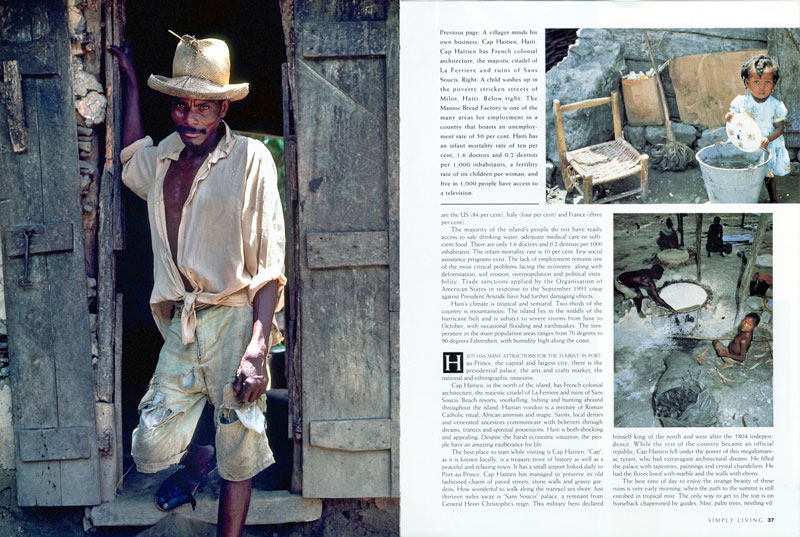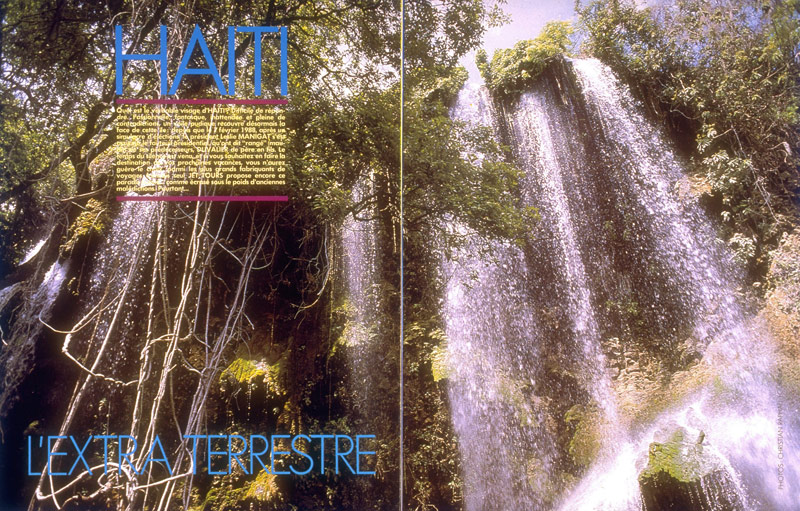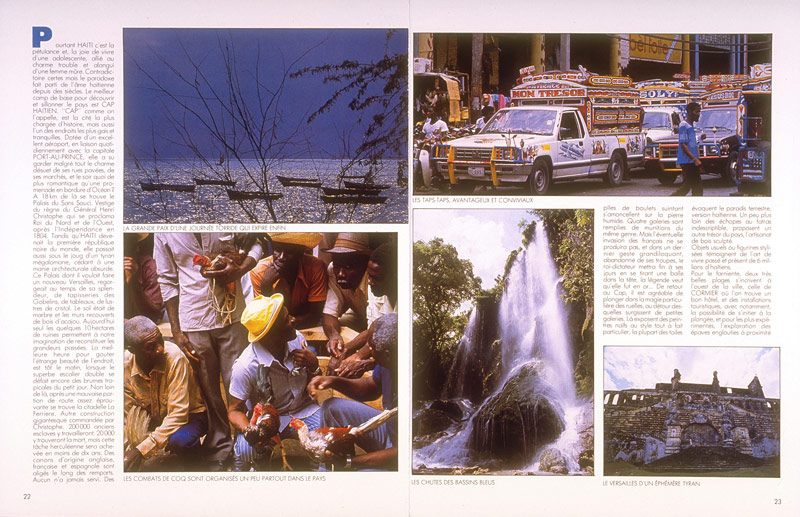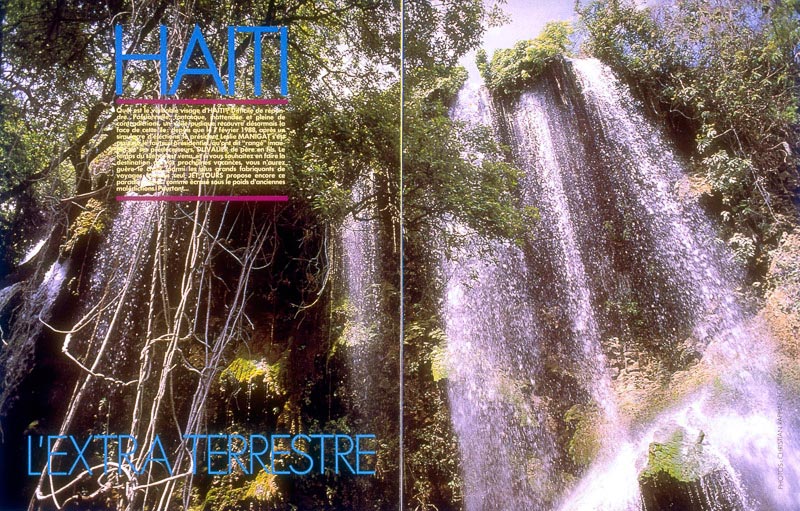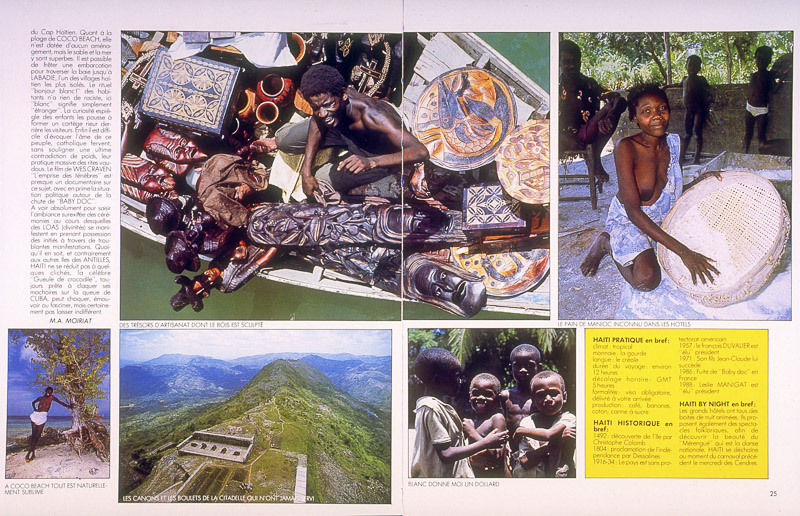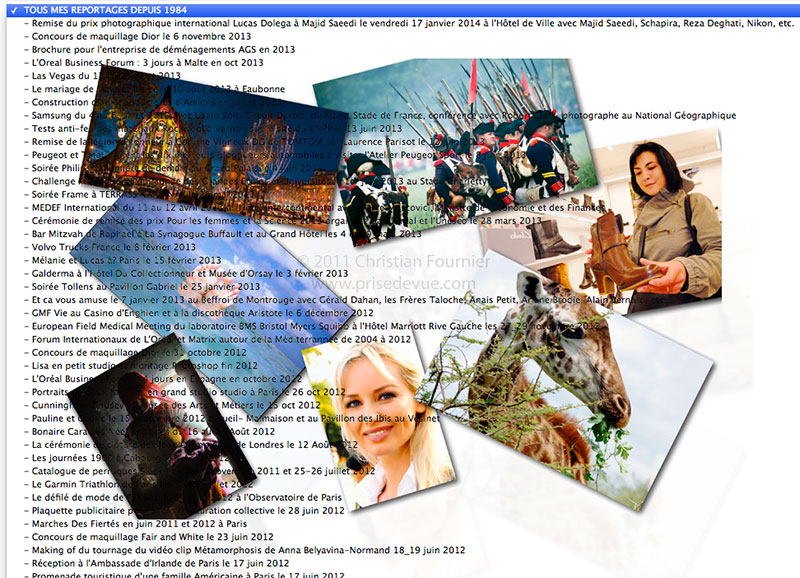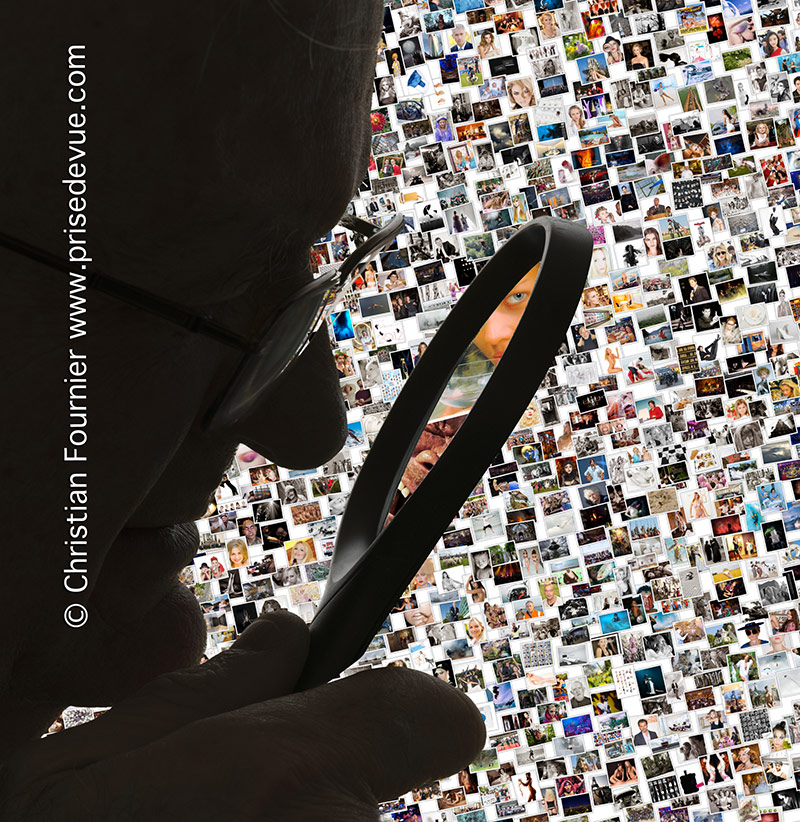Page 23 : Haïti in 1980, 1981 and 1984 for "Simply Living" and "New Men" magazines.
It was before Sebastião Salgado.
I spent time in Haiti, during my work on cruiseships and also on vacation to photograph Gwendoline Henry and Kathy K Palma.
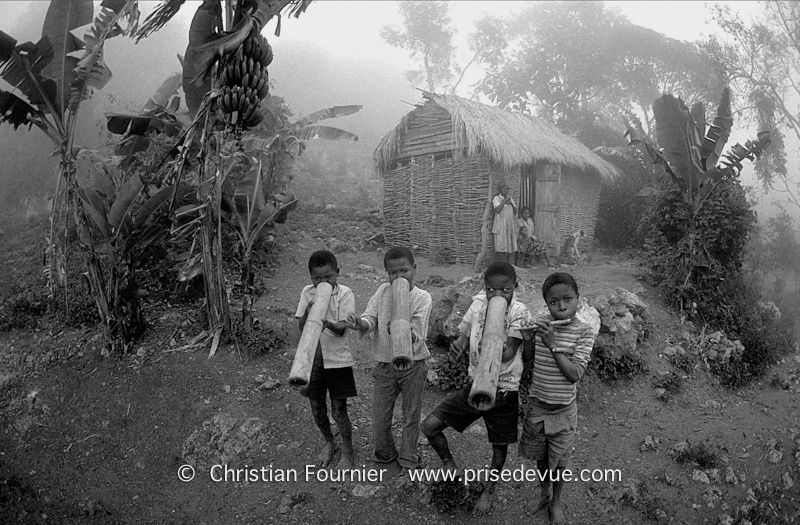
Children playing music on bamboo flutes to welcome visitors, near Sans-Souci Palace.
Haiti is one of the poorest countries in the world. Haitians are strikingly kind and sincere. We, the rich and arrogant, could learn a thing or two from them.
The splendours and horrors of Haiti.
Port au Prince, Cap Haitien, Le Relais de l'Empereur, la citadelle Laferrière, le Palais de Sans-Souci.
Interview, with professional photographer Christian Fournier, November 25, 2020, for 1 hour 20 minutes, through a video conference on Skype. All four members of the Intercom Agency were present and the entire team recorded the interview using a cell phone. Also, all the members of the agency intervened and interviewed the professional.
CF : Christian Fournier (interviewed) AF : Aida Ferdjani, PB : Perrine Bannuls, CG : Carolina Gonçalves, CC : Catalina Cuartas
CC: We know that often in your job you are confronted with shocking and very difficult situations, especially during wars or natural disasters for example. For your part, we have seen on your site that you have done reports in Haïti and India. You have probably been confronted with situations of extreme poverty. We would like to know, how do you manage to manage this?
CF: Ah, that's abominable! It's very hard. I photographed extreme poverty. But war, people dying, I didn't do that, I couldn't.
For example Haiti in the 1980s was the poorest country in the world, poorer than India… it was horrible. These people are very nice, they have virtually nothing, but still, they are ready to share what little they have, to invite you everywhere. It’s pretty amazing! They are also very helpful. when you arrive and look for a taxi, you immediately have two hundred people: "Take me, take me!", But, as soon as you start a conversation with one of them, the others leave. So, despite their poverty and their hunger, they have a great morality. I adore these people. It is… My photos have been published in several magazines. Of course, I wrote that you have to help these people ... I hope it had an impact.
|
Text and Photos: Christian Fournier
Haiti is a truly amazing and unique island.
In the middle of the Caribbean sea, it differs greatly from its famous neighbours: Cuba, Grand Cayman, Jamaica, Puerto Rico, the U.S. Virgin Islands and French Martinique. Probably because of its poverty, Haiti is not a major tourist destination. But it has an international airport, several domestic ones, thousands of miles of highway and many excellent hotels. Haiti is virtually crime free, inexpensive and has much to offer the visitor: the magic of its bustling streets and markets, its spectacular natural scenery, its world-renowned naïve art and wood carvings.
Independent Haiti is the world’s oldest black republic. The poorest country in Latin America, it is also one of the world's most poverty- stricken nations. Roman Catholicism is the official religion, although voodoo, with its wild rituals, is widely practised. The island has: wonderful beaches, rain forest, mountain ranges, gushing waterfalls and desert plains. Despite the poverty and overcrowding, the inhabitants of Haiti are always smiling, enthusiastic, creative and welcoming.
Haiti, with its 10,700 square miles, occupies half of the island of Hispaniola.
Discovered by Christopher Columbus in 1492, Hispaniola was divided in 1672 when Spain ceded a portion to France. Slaves, brought from Africa to work the plantations, gained their independence in 1804 and renamed the area: Haiti. In 1822, Haiti conquered the Spanish-speaking part of the island (the Dominican Republic), which broke free some twenty years later. Haiti had no less than 22 dictatorships between 1843 and 1915. Dr. Francis Duvalier (Papa Doc) was elected president in 1957 ; a 1964 "constitution" awarded him a lifetime term. Following his death in 1971, he was succeeded by his son Jean Claude Duvalier (Baby Doc).
A combination of political repression and famine from 1977 onward resulted in thousands of Haitians fleeing the country for southern Florida, often in unseaworthy boats. In 1986 Duvalier was overthrown. The military took control, and elections were held in January 1988 amid charges of fraud. In June 1988, the military again seized power. President Jean-Bertrand Aristide (democratically elected in December 1990) was ousted in a coup by general Raoul Cèdras, in September 1991, but he is still recognized today by international community as Chief of State. The new president, Joseph NERETTE, installed by the military, resigned in June 1992. Prime minister Marc Bazin took over, but resigned too, in June 1993. Bill Clinton wants to reinstate Jean-Bertrand Aristide in order to re-establish democracy in Haiti, but made himself very unpopular with his very strong aerial and naval embargo stopping all "boat people" (Haitian refugees) to enter the USA. In September 1993 another president, Robert Malval is elected. He will resign in December 1993. It is Emile Jonassaint who is, in summer 94, president, still not recognized by the international community.
Haiti, with its 6.5 million inhabitants, is one of the most densely populated countries in the world (600 people per square mile). With a fertility rate of 6 children per woman, 45 % of Haitians are under the age of 15. Only 4 % are over the age of 65.
About 95 % of the population is of African origin, with the remainder of European, Levantine or mixed descent. The official language is French, although the majority speaks Creole, a dialect derived from Norman, French, Spanish, African and Arawak Indian. Haiti’s literacy rate is 23 %, the lowest in Latin America. Out of a 1000 people, only 6 have access to newspapers, 9 have a telephone, 42 a radio and 5 a television set.
75 % of Haitians live on farms too small for family subsistence. The inflation rate is 20 %, unemployment is at 50 %. Coffee is the chief export, bauxite and copper the main minerals. Haiti's trading partners are the U.S. (84 %), Italy (4 %) and France (3 %).
The majority of the island's people do not have ready access to safe drinking water, adequate medical care or sufficient food. There are only 1.6 doctors per 1000 inhabitants and 0.2 dentists. The infant mortality rate is 10 %. Few social assistance programmes exist. The lack of employment remains one of the most critical problems facing the economy, along with deforestation, soil erosion, overpopulation and political instability. Trade sanctions applied by the Organization of American States in response to the September 1991 coup against President Aristide have had further damaging effects.
Haiti's climate is tropical and semiarid. Two-thirds of the country is mountainous. The island lies in the middle of the hurricane belt and is subject to severe storms from June to October, with occasional flooding and earthquakes. The temperature in the main population areas ranges from 70° to 90°F, with humidity high along the coast.
Haiti has many attractions for the tourist. In Port-au-Prince, the capital and largest city, there is the presidential palace, the arts and crafts market, the national and ethnographic museums. Cap Haitien, in the north of the island, has French colonial architecture, the majestic citadel of La Ferrière and ruins of Sans Soucis. Beach resorts, snorkelling, fishing and hunting abound throughout the island.
Haitian voodoo is a mixture of Roman Catholic ritual, African animism and magic. Saints, local deities and venerated ancestors communicate with believers through dreams, trances and spiritual possessions.
Haiti is both shocking and appealing. Despite the harsh economic situation, the people have an amazing exuberance for life.
The best place to start the visit is Cap Haitien. "Cap", as it is known locally, is a treasure trove of history as well as a peaceful and relaxing town. It has a small airport linked daily to Port-au-Prince. Cap Haitien has managed to preserve its old fashioned charm of paved streets, stone walls and grassy gardens. How wonderful to walk along the tranquil sea shore. Just 13 miles away is "Sans Soucis" palace, a remnant from General Henri Christophe’s reign. This military hero declared himself king of the north and west after the 1804 independence. While the rest of the country became an official republic, Cap Haitien fell under the power of this megalomaniac tyrant, who had extravagant architectural dreams. He filled the palace with tapestries, paintings and crystal chandeliers. He had the floors lined with marble and the walls with ebony. The best time of day to enjoy the strange beauty of these ruins nowadays is very early morning, when the path to the summit is still enrobed in tropical mist. The only way to get to the top is on horse back chaperoned by guides. Mist, palm trees, nestling villages… what a ride ! At the summit is the citadel of La Ferrière. Another of Christophe's wild schemes: it took 200,000 slaves ten years to build. 20,000 died during its construction. Canons from France, England and Spain are aligned along the parapets. They were never fired. Iron balls decorate the damp stones. The French invasion failed to happen and the dictator-king, abandoned by his troops, shot himself in the head according to legend with a gold bullet.
Back to Cap Haitien, it is wonderful to stroll through the magic of its narrow streets. Local artists exhibit everywhere. There is an amazing consistency of styles: the naive, colourful paintings evoke paradise on earth. Haitian art is now recognized the world over. Paintings are becoming collectors' items and Haiti's wood carvings are acquiring international renown. Unlike the poorly-made, mass-produced tourist products of the Bahamas, Jamaica and Puerto Rico, Haitian art is still the genuine article. As everywhere, bargaining is common place: start at half the offered price and keep on negotiating. It is a ritual and expected. No offence intended. However some street vendors and most beggars refuse to take no for an answer and will pursue you for miles, following you inside other shops, to your hotel, for a few "gourdes". The best way to avoid this is to get a street guide, usually a young boy, to accompany you. He will escort you, clear beggars and vendors and even bargain for you. You must tip him of course.
Haitian cities are exhausting. There is the heat, the noise, the dust, the constant haggling. As soon as you want something, two dozen people rush forward to serve you. Occasionally fights break out over your favours. One trade impressed me greatly. Taxi drivers have a strict code of ethics. As soon as you emerge from a hotel, shop or airport, 200 drivers clamour to get the ride. The effect is overwhelming. You choose one at random to escape the hell, and the others stop. Magic. No more hassling. Compare this to the Bahamas or Jamaica !
More relaxing are the magnificent western beaches. Cornier has tourist facilities, including scuba diving, while Coco and Ibo are totally unspoiled. White sand and crystal clear water. Paradise. Almost. The scuba is disappointing, for one simple reason: there are no fish. The colourful Caribbean reef fish is not edible by normal standards, but starving and industrious Haitian fishermen catch them for food and deplete the reefs. From Coco Beach you can hire an old canvas sail boat and go to Labadie, an isolated Haitian village and beach taken over one day a week by a giant Royal Caribbean Cruise Line vessel for a beach party. The natives greet you: "-Bonjour, blanc !" (Good morning, white ! ). This is not a racist statement. White means stranger here.
Highly exciting is a visit to the back country: isolated villages, lush forests, waterfalls. No plastic, no beggars, no hassle. Only immense beauty, in the landscape as in the people. Les Chutes du Bassin Bleu (the Blue Lagoon Falls) are as spectacular as they are hard to get to. A precarious, lengthy and hot jeep ride, followed by a three hour hike through the tropical rain forest, ends at a waterfall of overwhelming splendour for a well deserved and cooling dip.
Back to Port-au-Prince, teeming with life. The spice and food markets are a veritable treat with their colourful displays, exotic smells and haggling voices. Manioc bread is cooked right in front of you. Meat is sold in the open air. In the heat it is covered in flies. The slaughter house is public. There are few intermediaries: producers usually sell their own wares. The coal market is a sight not to be missed. Charcoal is the main fuel for cooking since there is little gas, oil or electricity. As a result deforestation is intense and dramatic. It is the same old story: trees are being cut down at a much faster rate than their growth, so the future is grim. The coal market is black indeed ! And very crowded. A maze of narrow streets, baskets and carts everywhere, fast transactions, a reek of pungent smells. The white tourist does not go unnoticed and quickly attracts an escort of kids and beggars.
The water supply is a major problem in the towns. Most people do not have running water in their homes. They must go to the nearest pump and queue, then carry the heavy buckets back. Many wash naked in the sewage water in the street.
Still, there are some luxurious places in Port-au-Prince: hotels, air conditioned shops, official buildings. The attractive rum factory Barbancourt is one such place and exports its rum world wide.
Some of the sights are incredible: communal transport is the Tap-Tap, a sort of van, usually 30 years old and always breaking down. Colourfully painted and decorated with mostly religious icons, the Tap-Taps are always crowded, with people, bags, live animals jammed onto the steps and roofs. The traffic in the towns is always impossible. There are jams everywhere: hordes of pedestrians, an amazing medley of motor, man or horse drawn vehicles, a cacophony of hooting horns.
A cockfight is a great attraction in Haiti, for the locals and the tourists alike. Favourite animals are lovingly cared for and trained for years. The placing of bets on the winning chicken drives people to extremes.
The Caribbean island of Haiti is completely African in its population and culture. African slaves were brought in during the sixteenth century and put to work on the plantations. Despite gaining its independence in 1804, Haiti failed to prosper. Its neighbours, still supported by their colonisers fared better: Puerto Rico, French Martinique and the U.S. Virgin Islands are thriving and British Grand Cayman is a world banking center. Even the Spanish occupied Dominican Republic, which shares the island of Hispaniola with Haiti, is better off.
Over population is a major problem. This is an obvious result of Catholicism, which remains strong in Haiti. The island's natural resources simply cannot support 6.5 million people ; there is little industrialization because no investments. Haitians are not lazy: on the contrary they are hard working and ingenious. I wonder how they feel when they see "wealthy" tourists, not always ingenious and often lazy, spending more on a hotel room for the night than their three months salary. How can they still believe in their Catholic gods? This world is not a just one. Yet Haitians are mostly helpful to foreigners and each other, frequently cheerful and observant of the rules of social conduct. The crime rate (excluding the political) is very low. A telling lesson to many of the world's rich nations.
Shocking or fascinating, always thought provoking, Haiti is well worth a visit.
|




